Download as PDF, PPTX
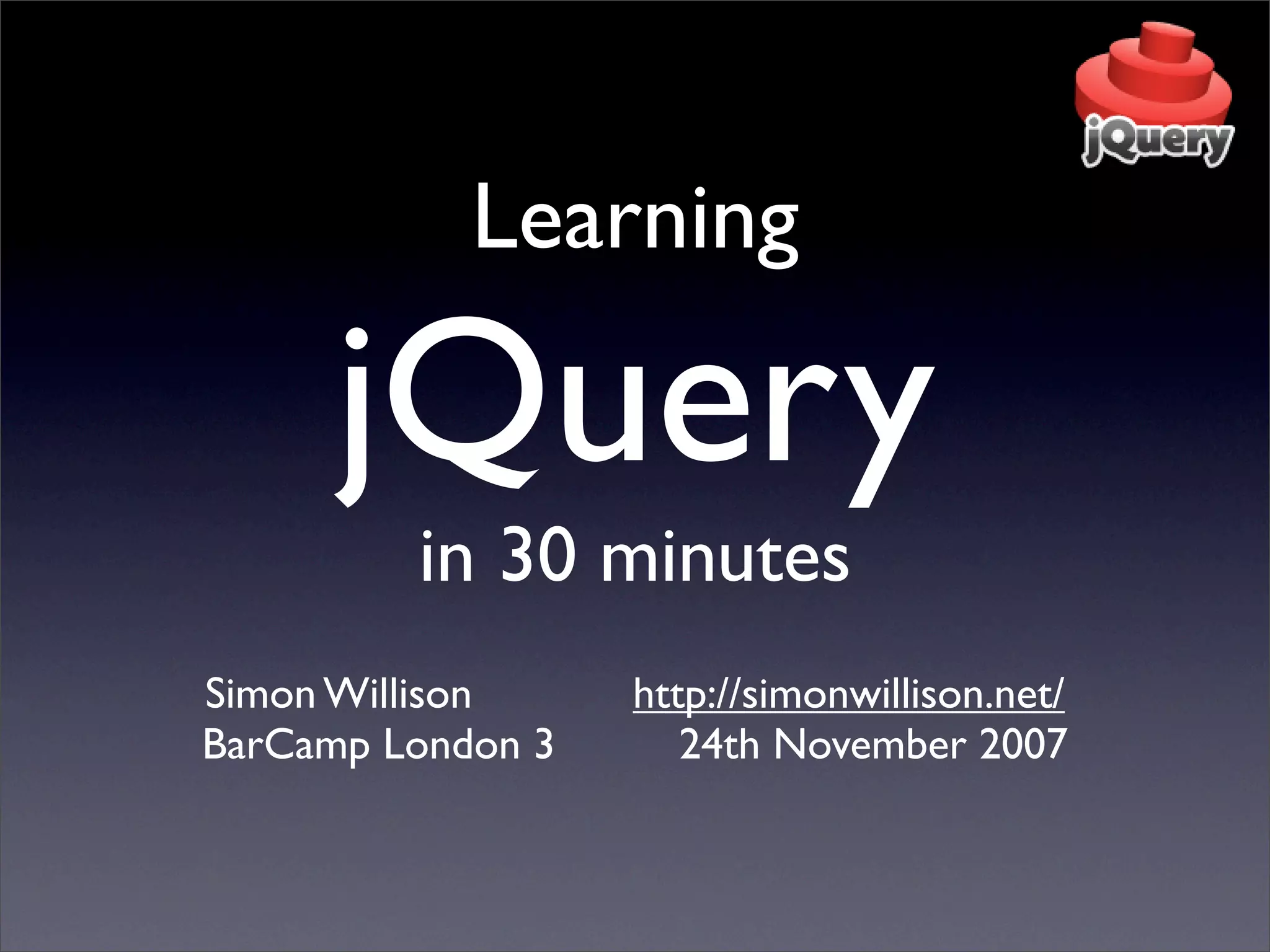
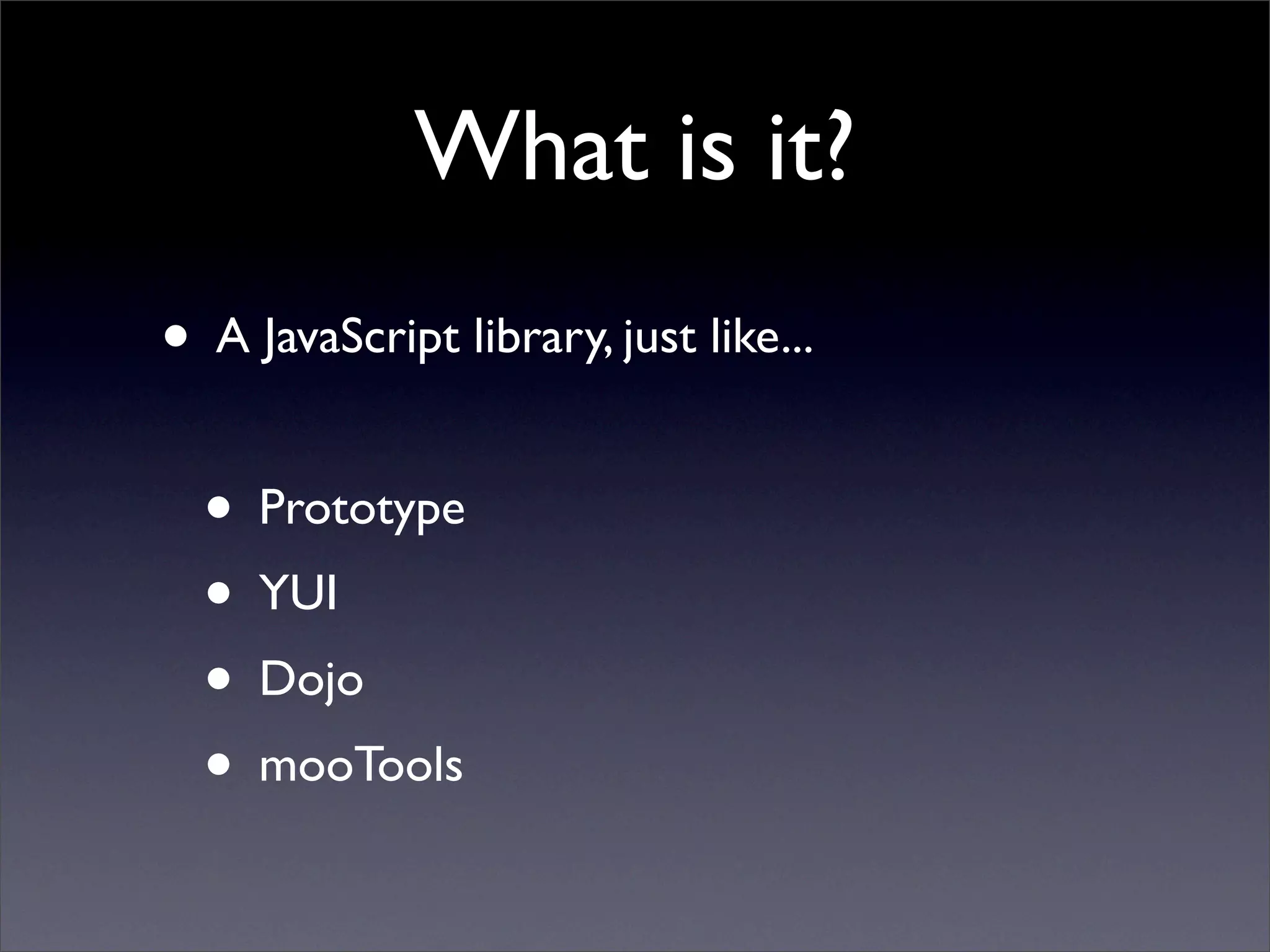
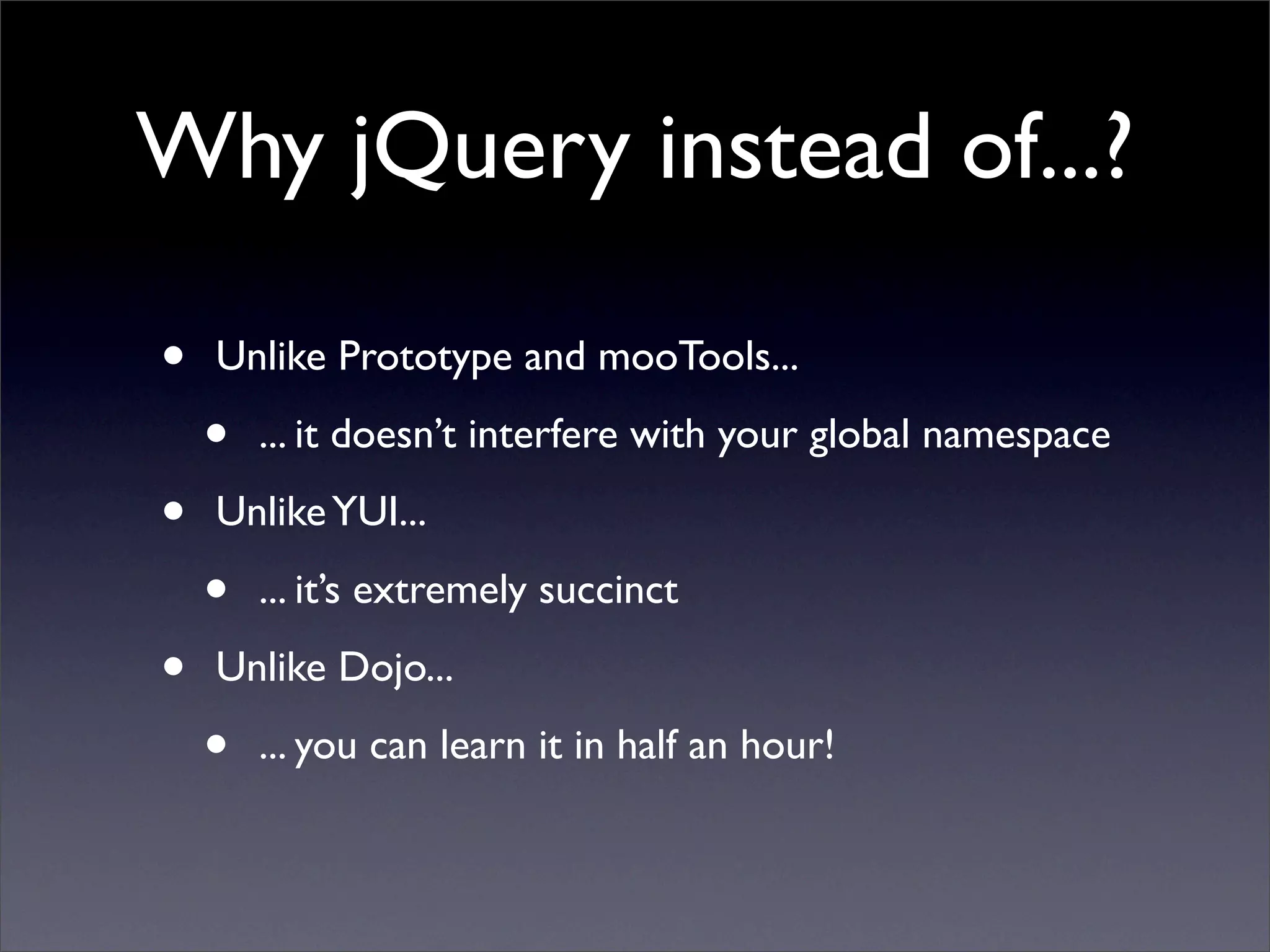
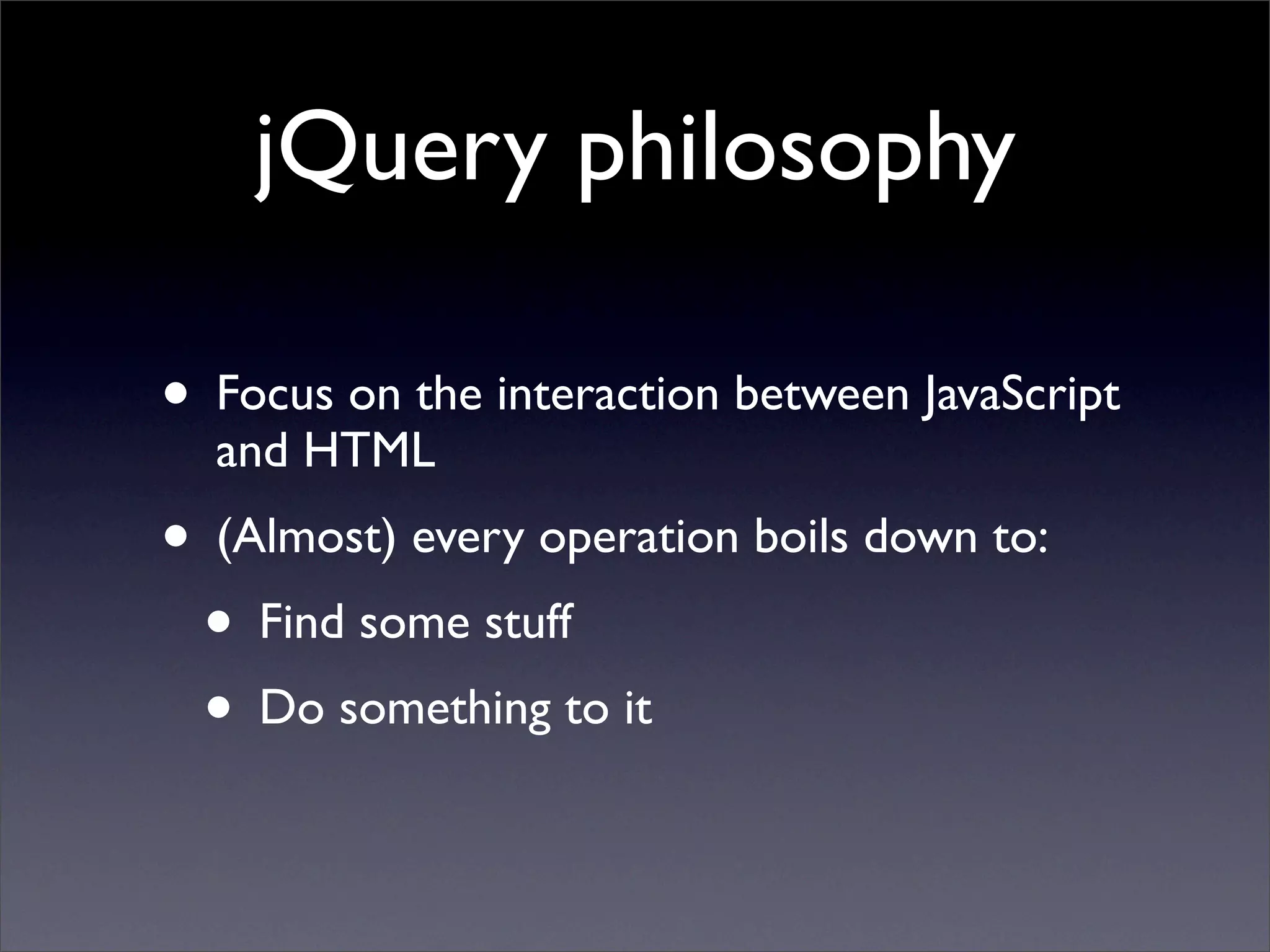
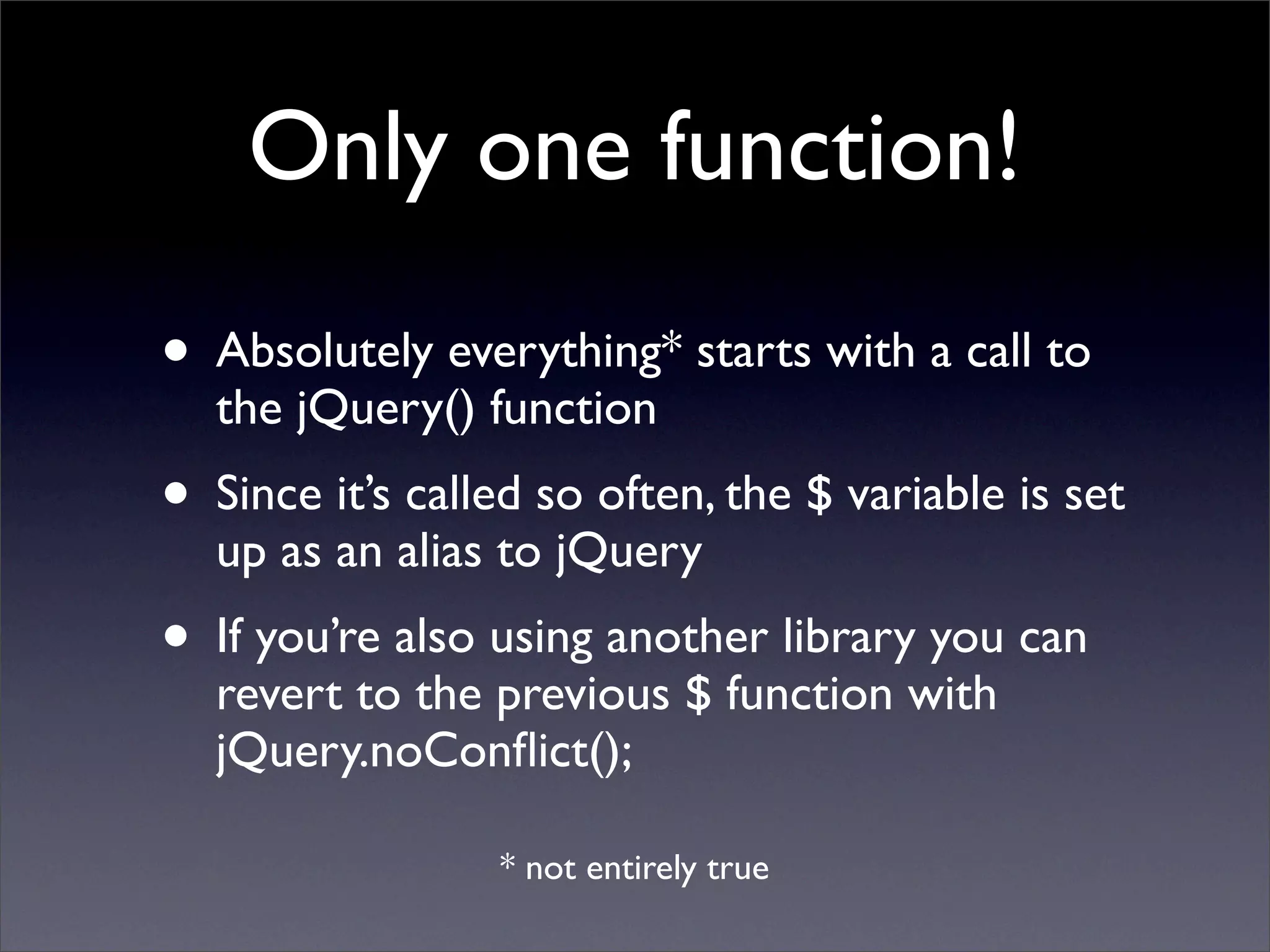
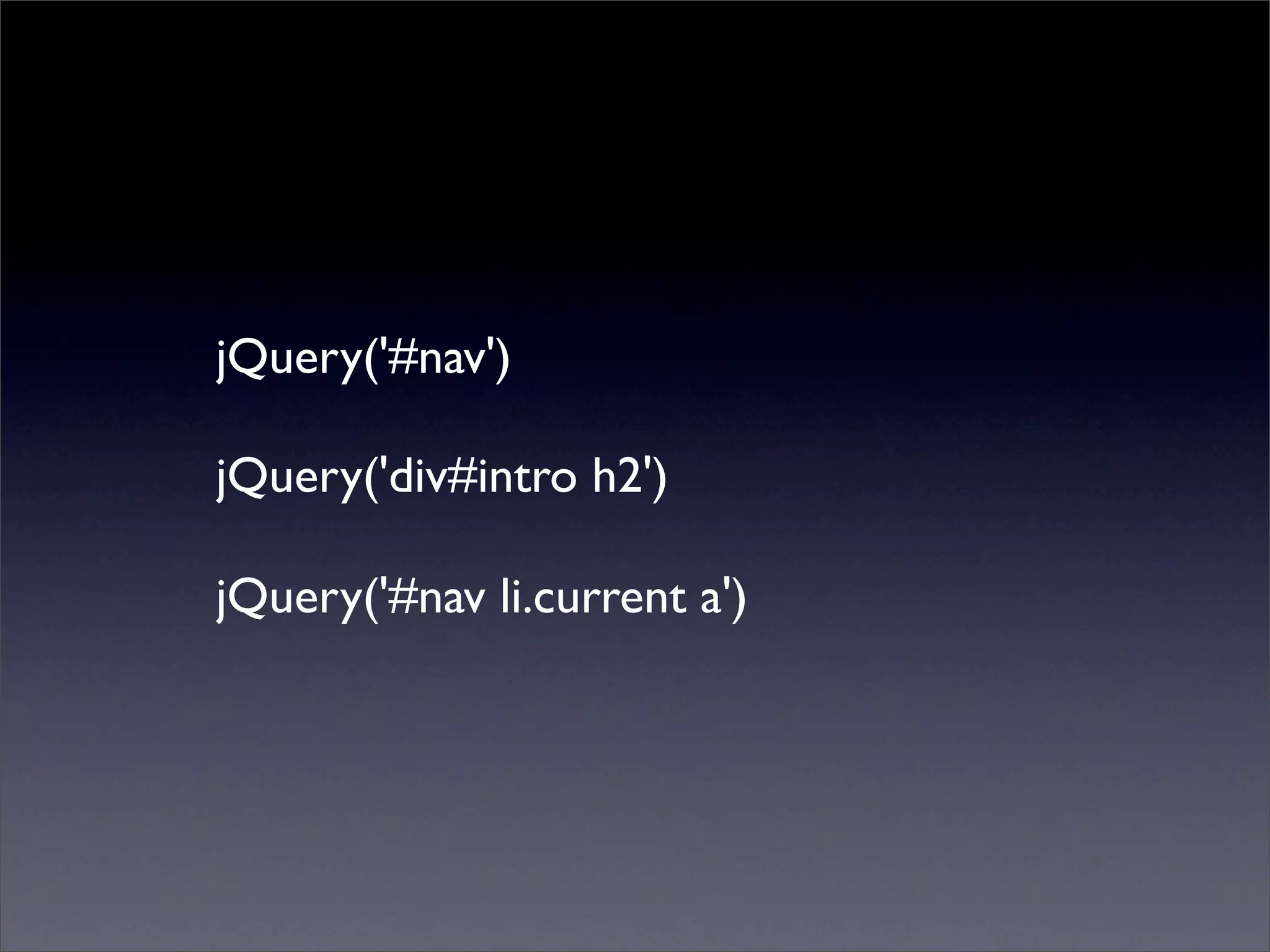
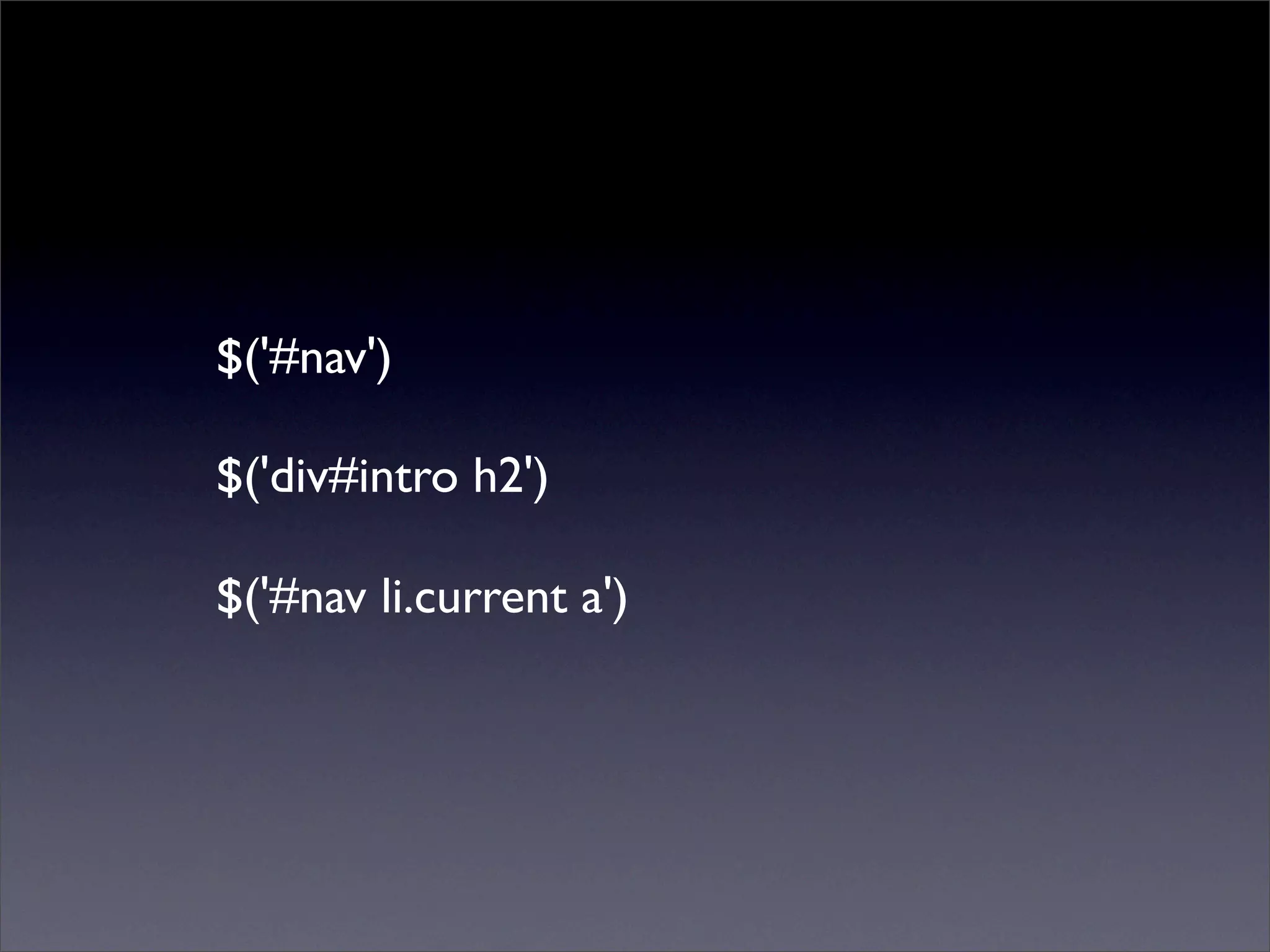
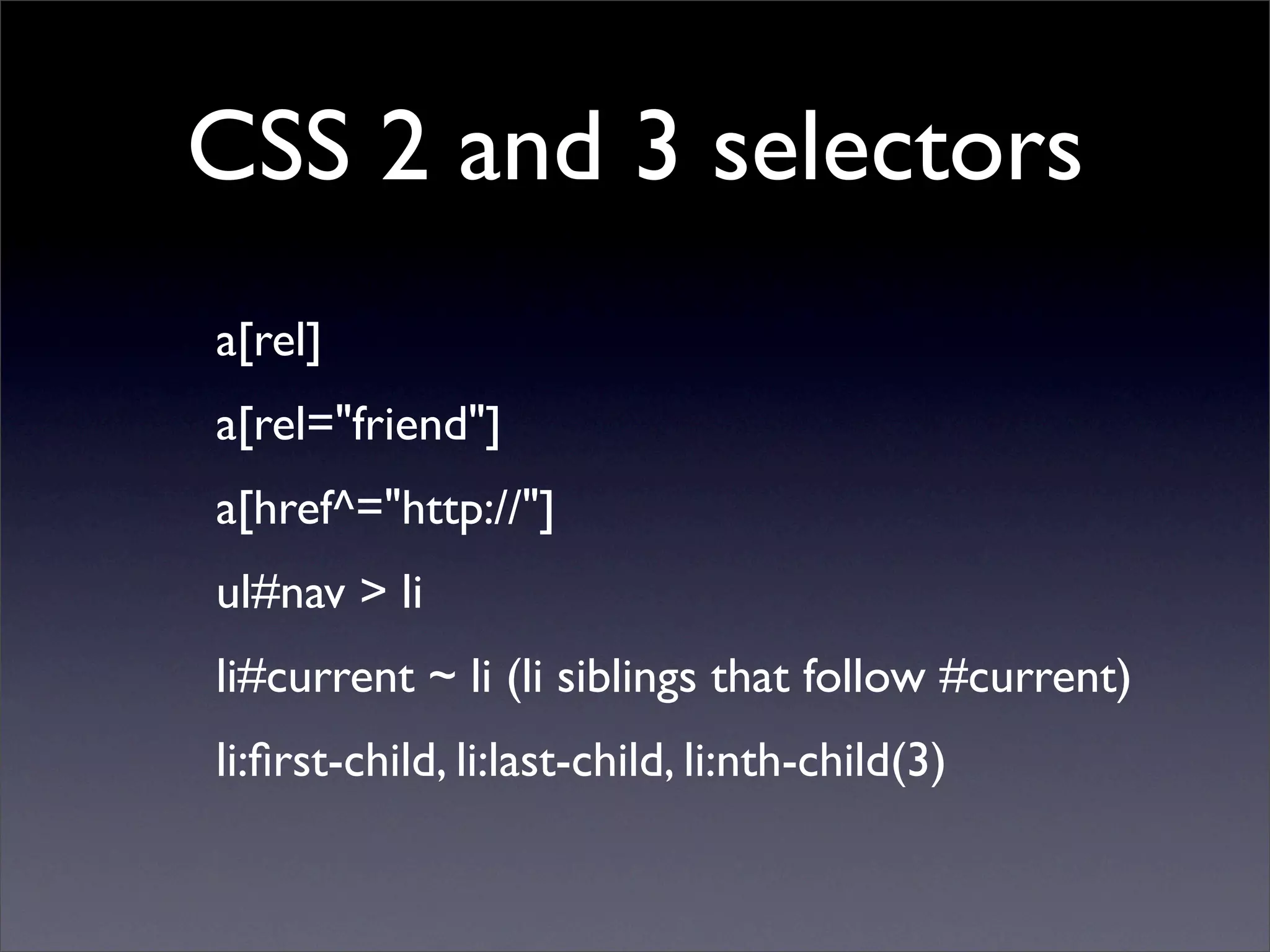
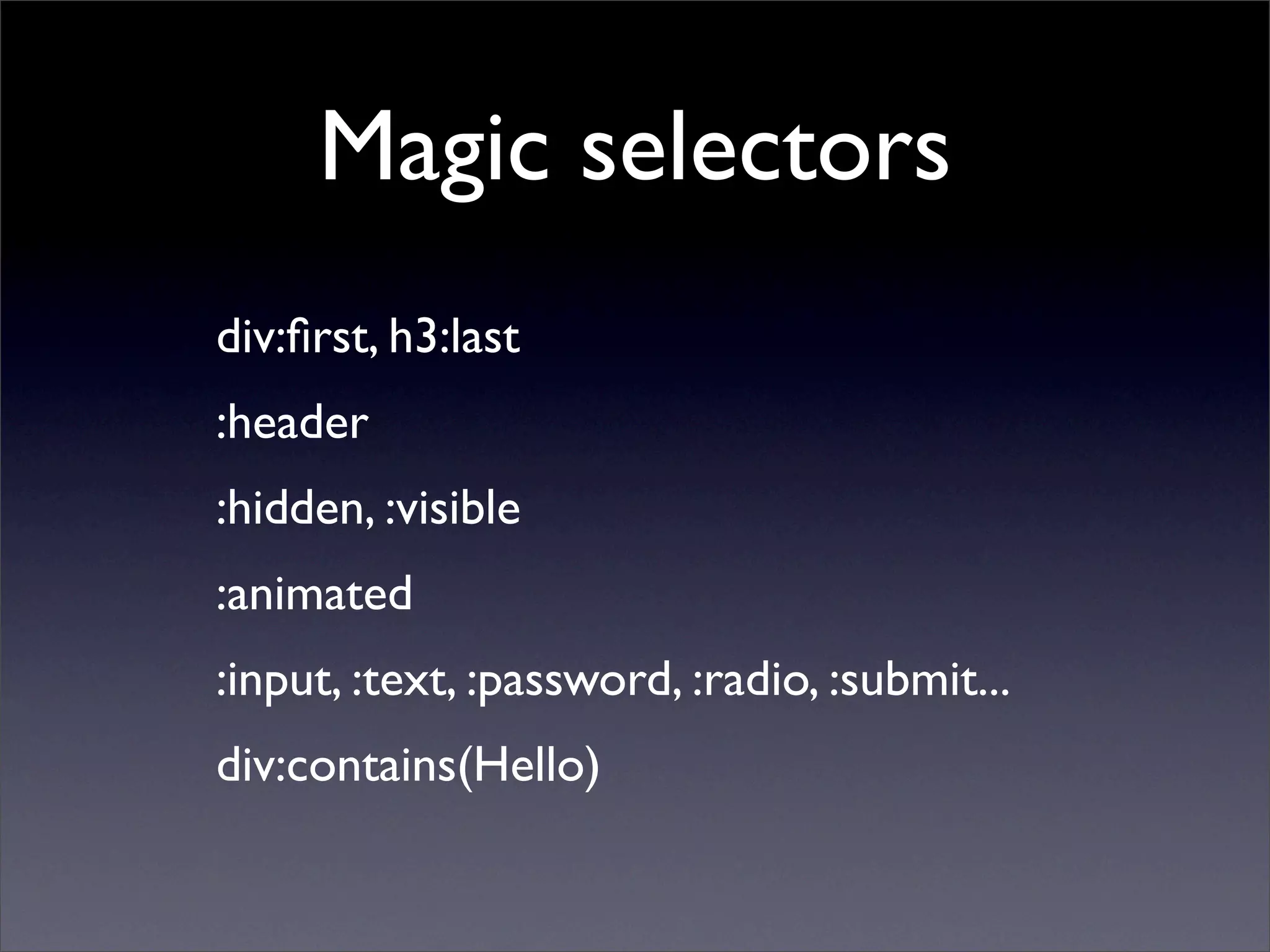
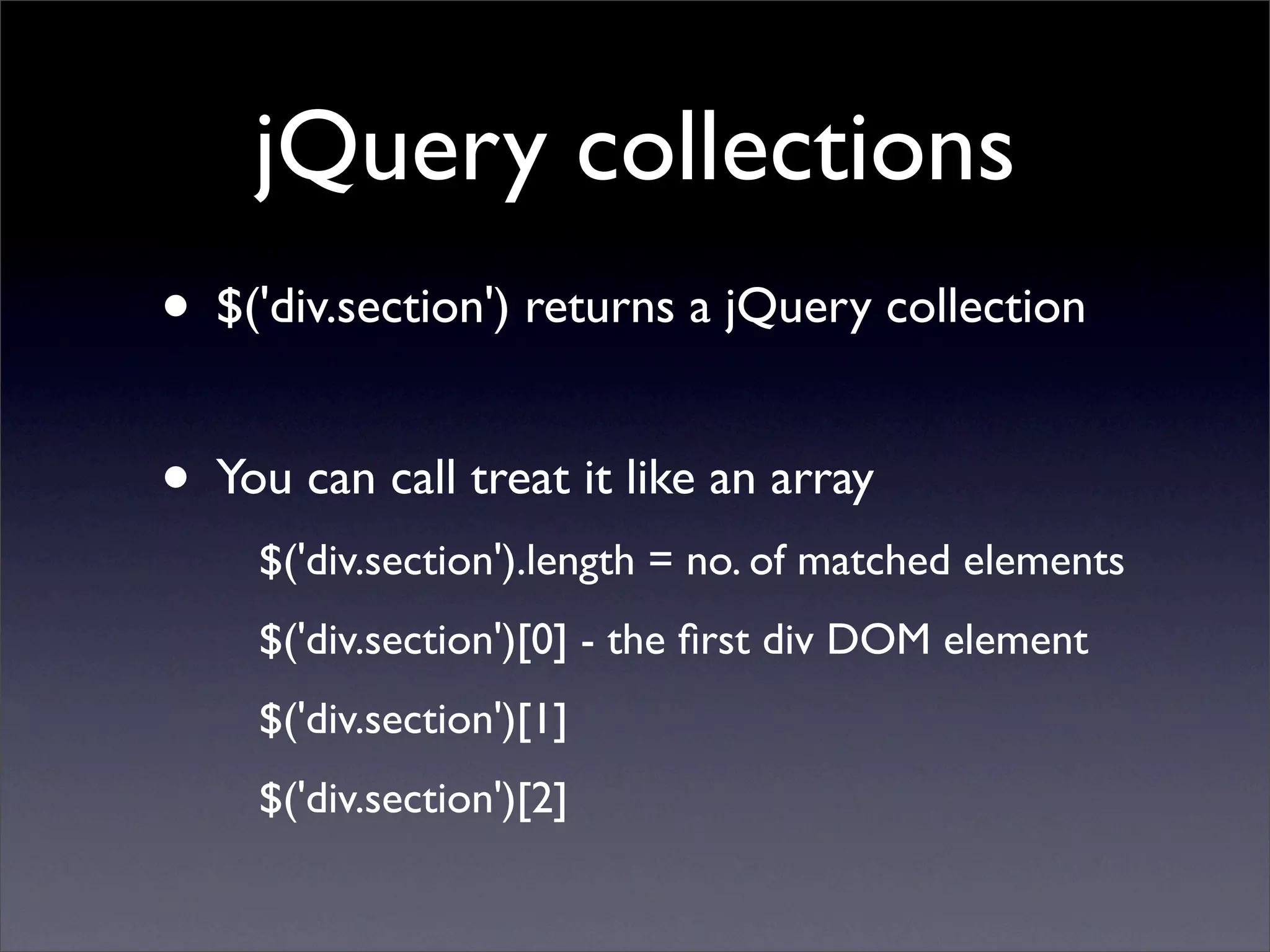
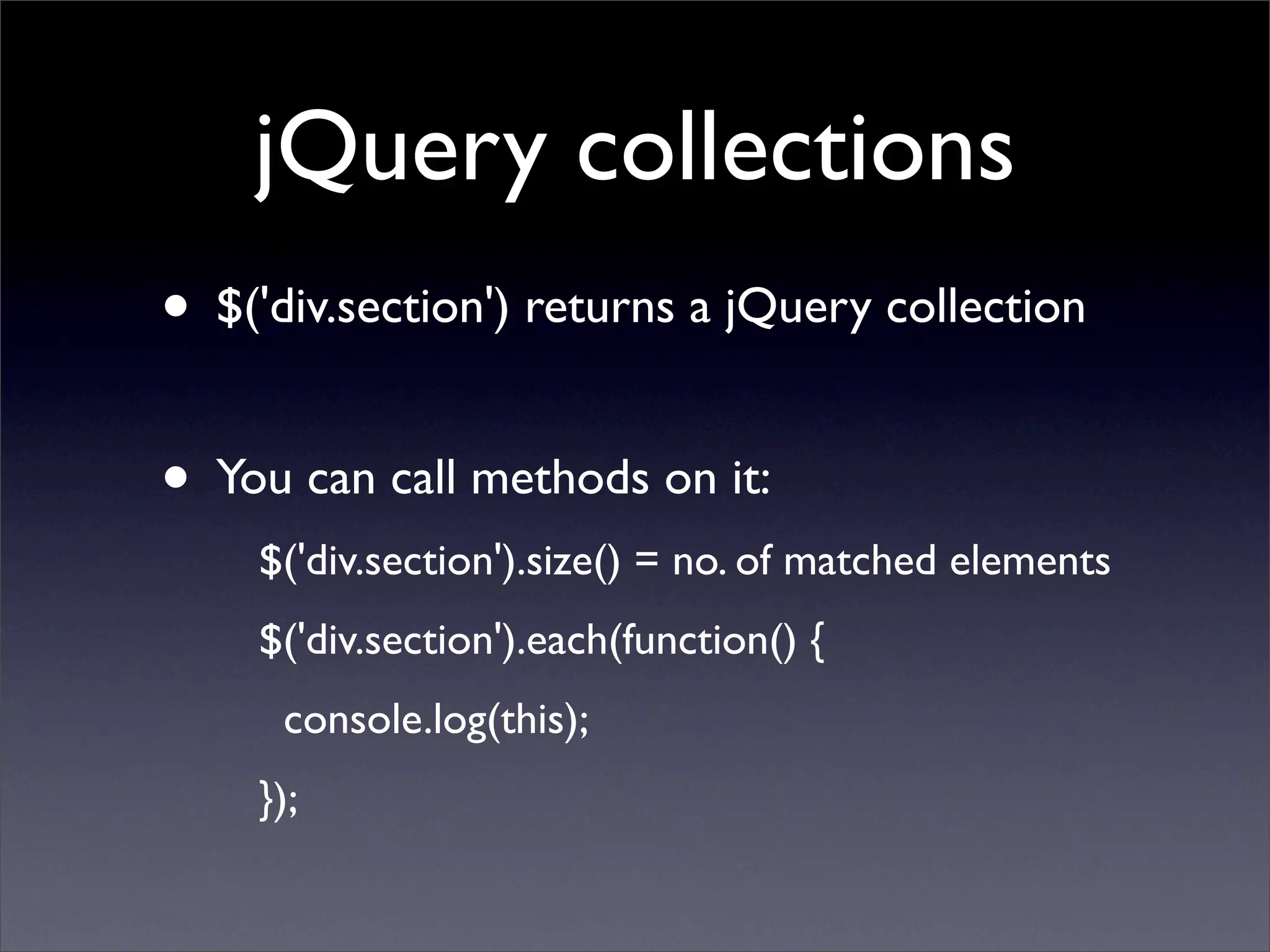
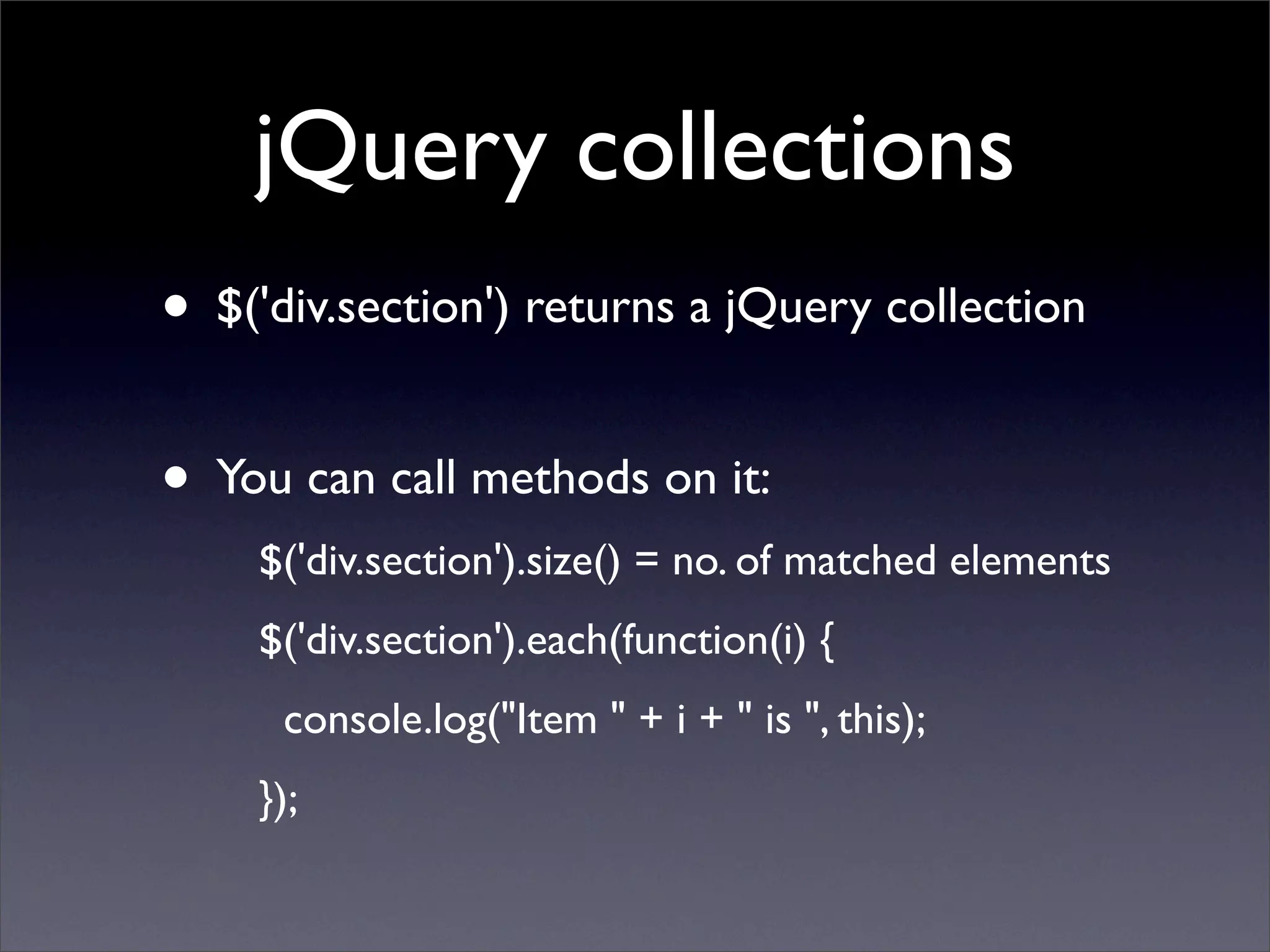
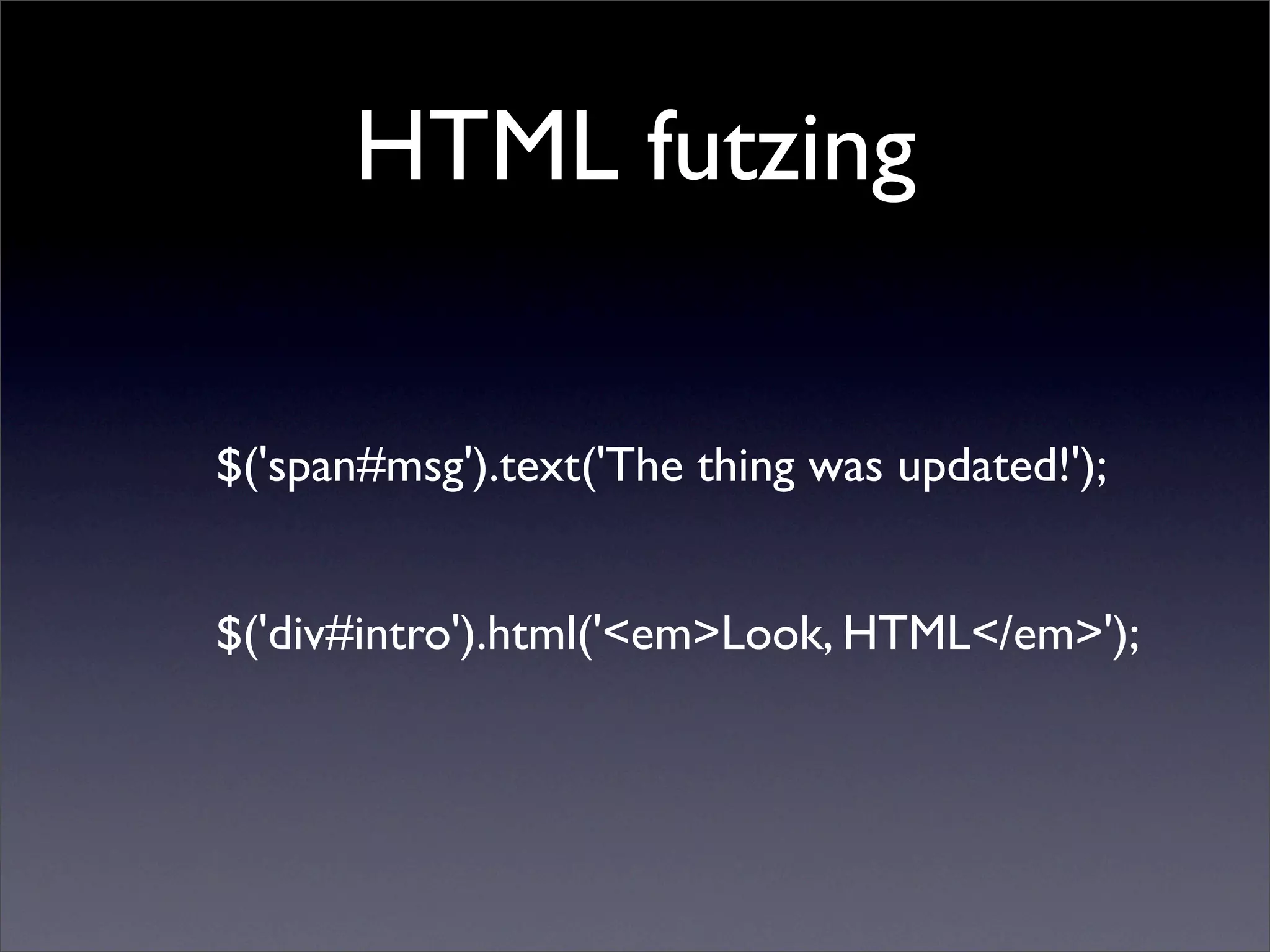
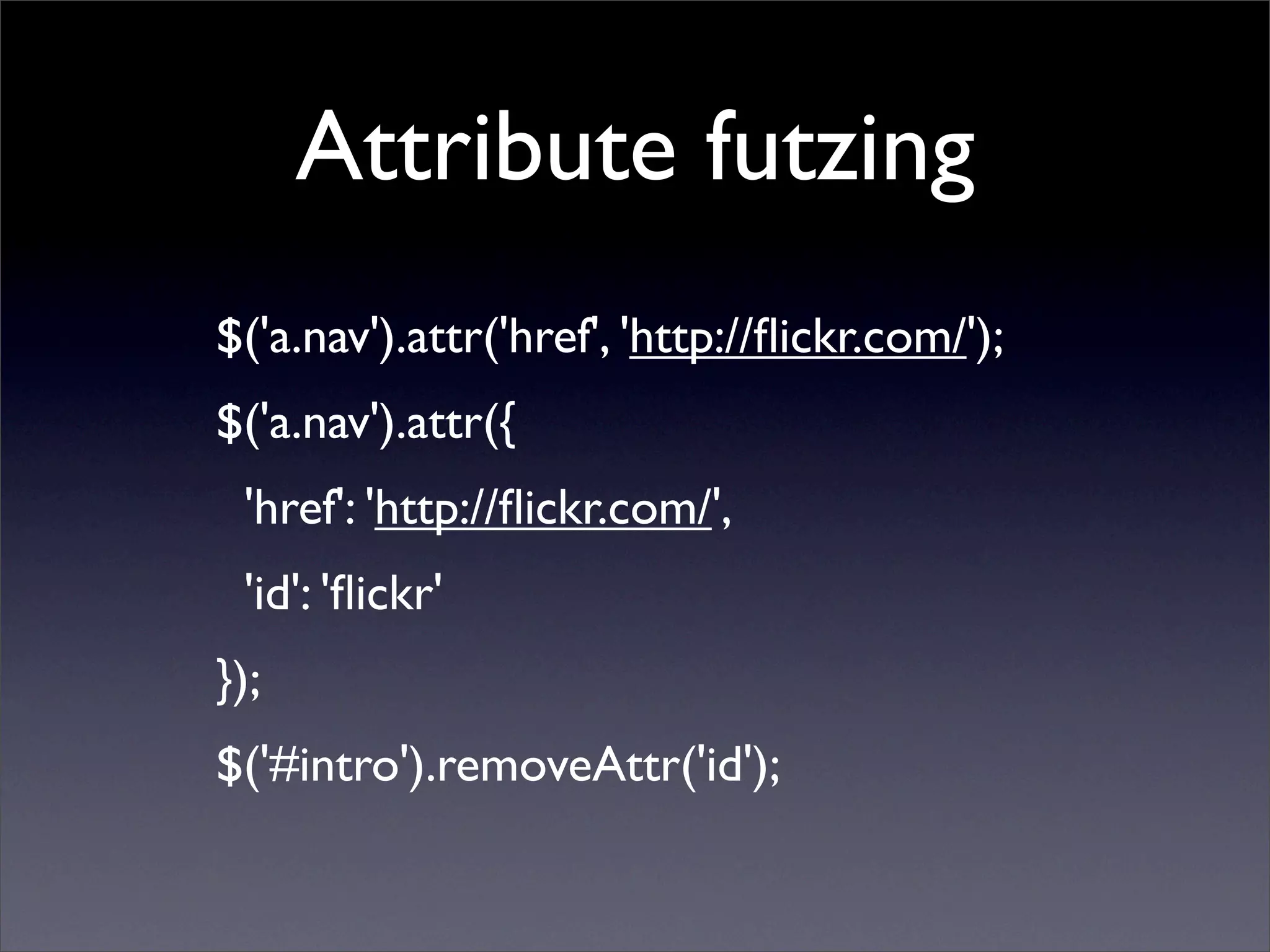
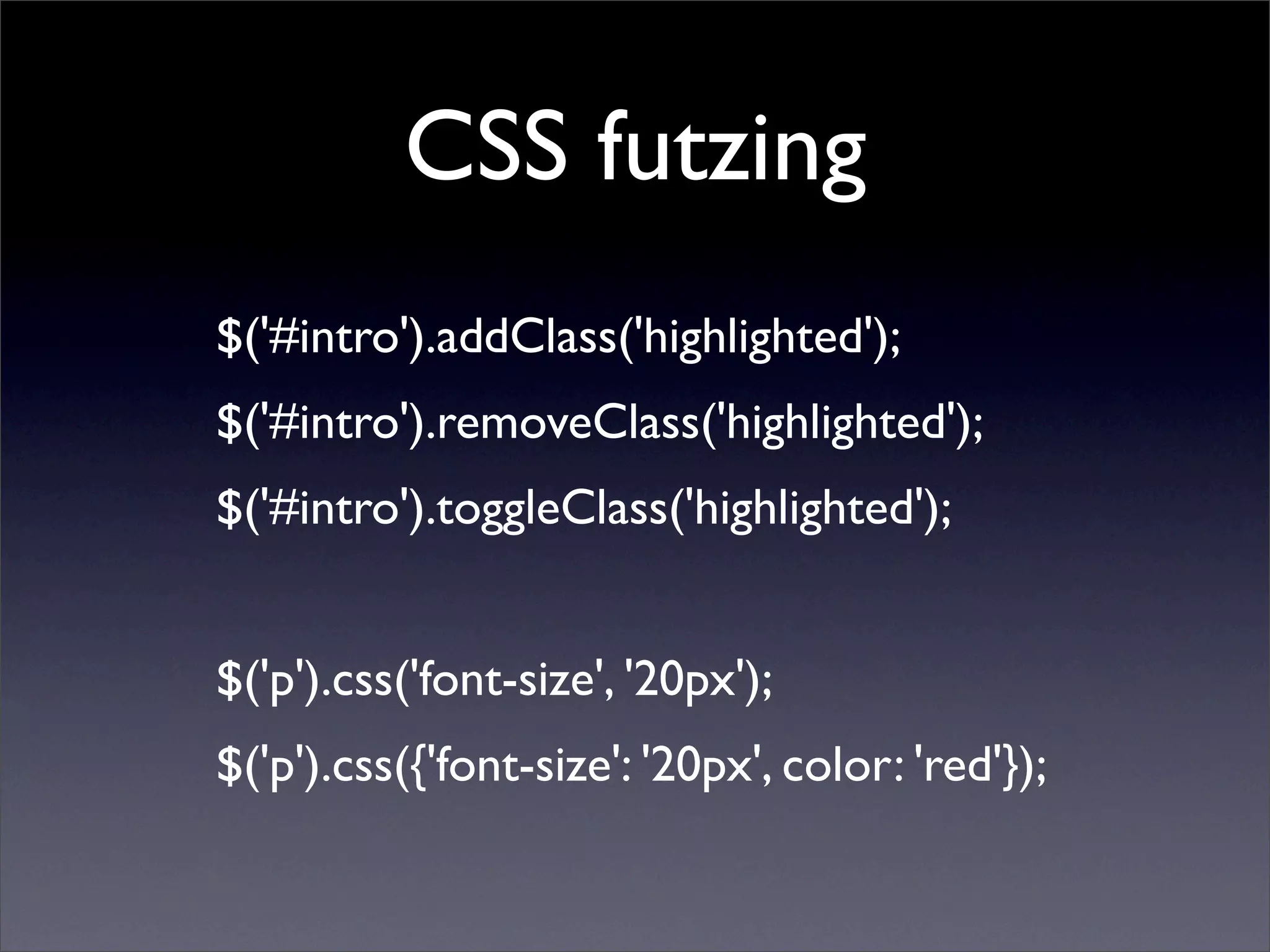
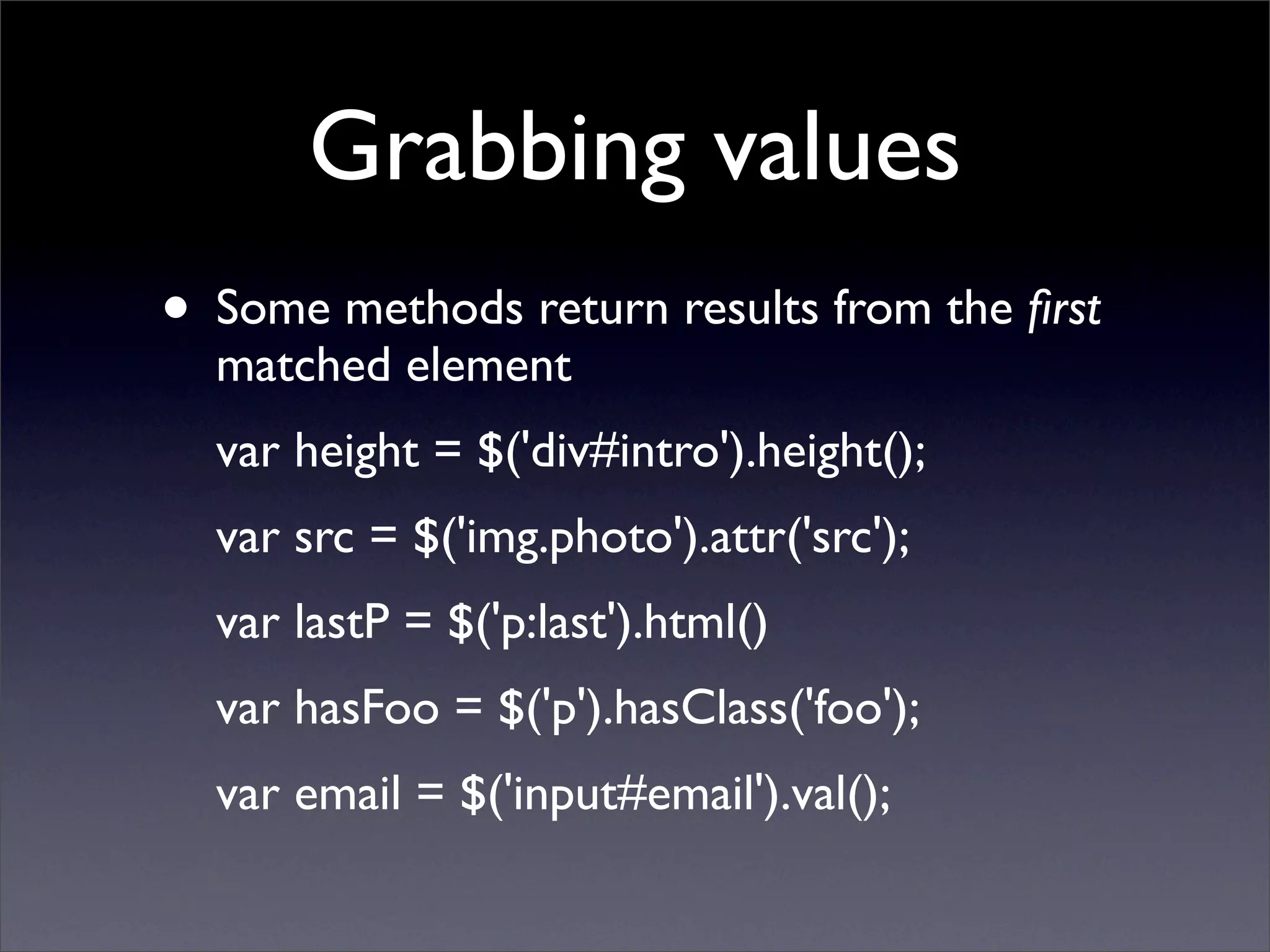
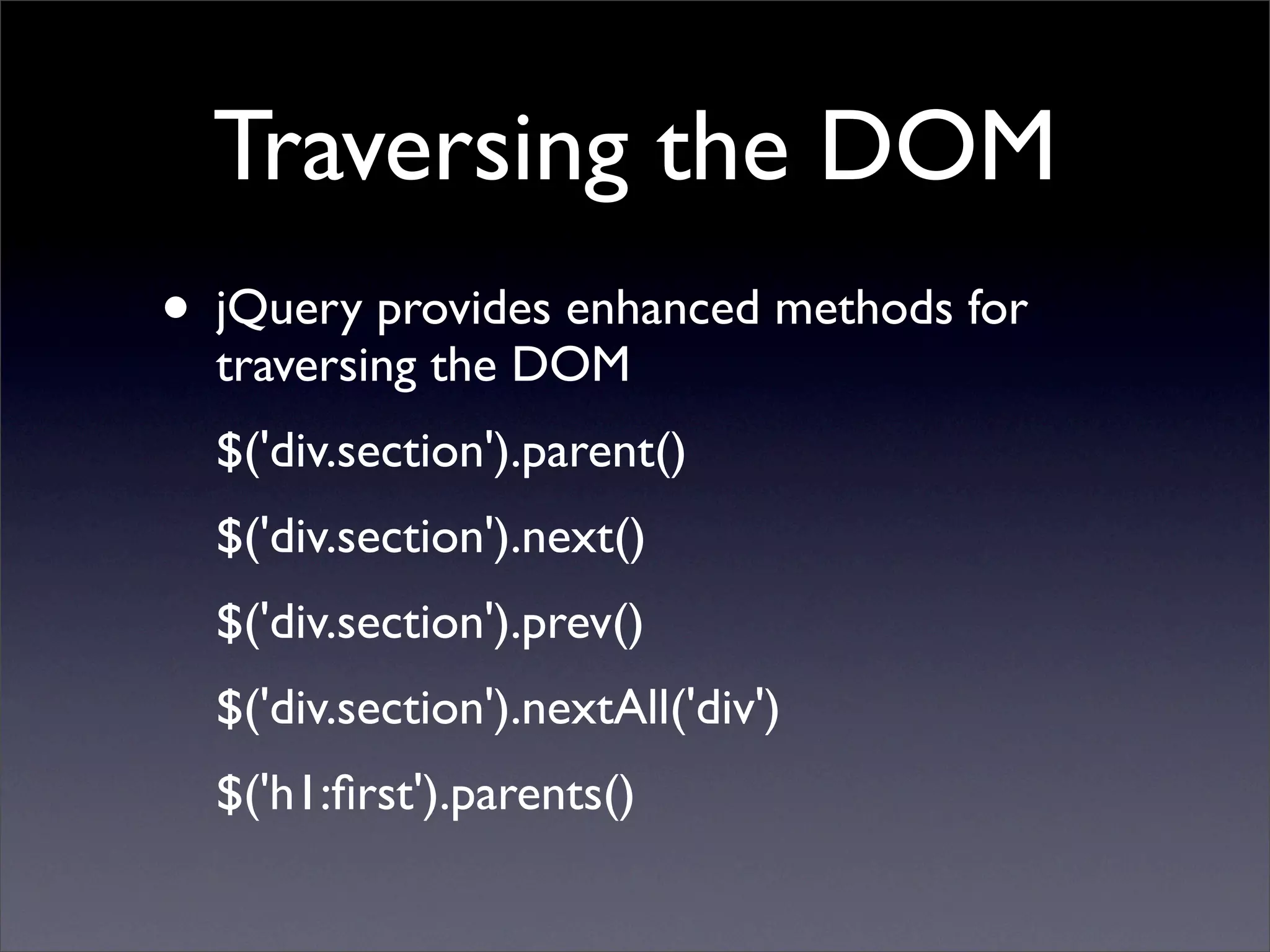
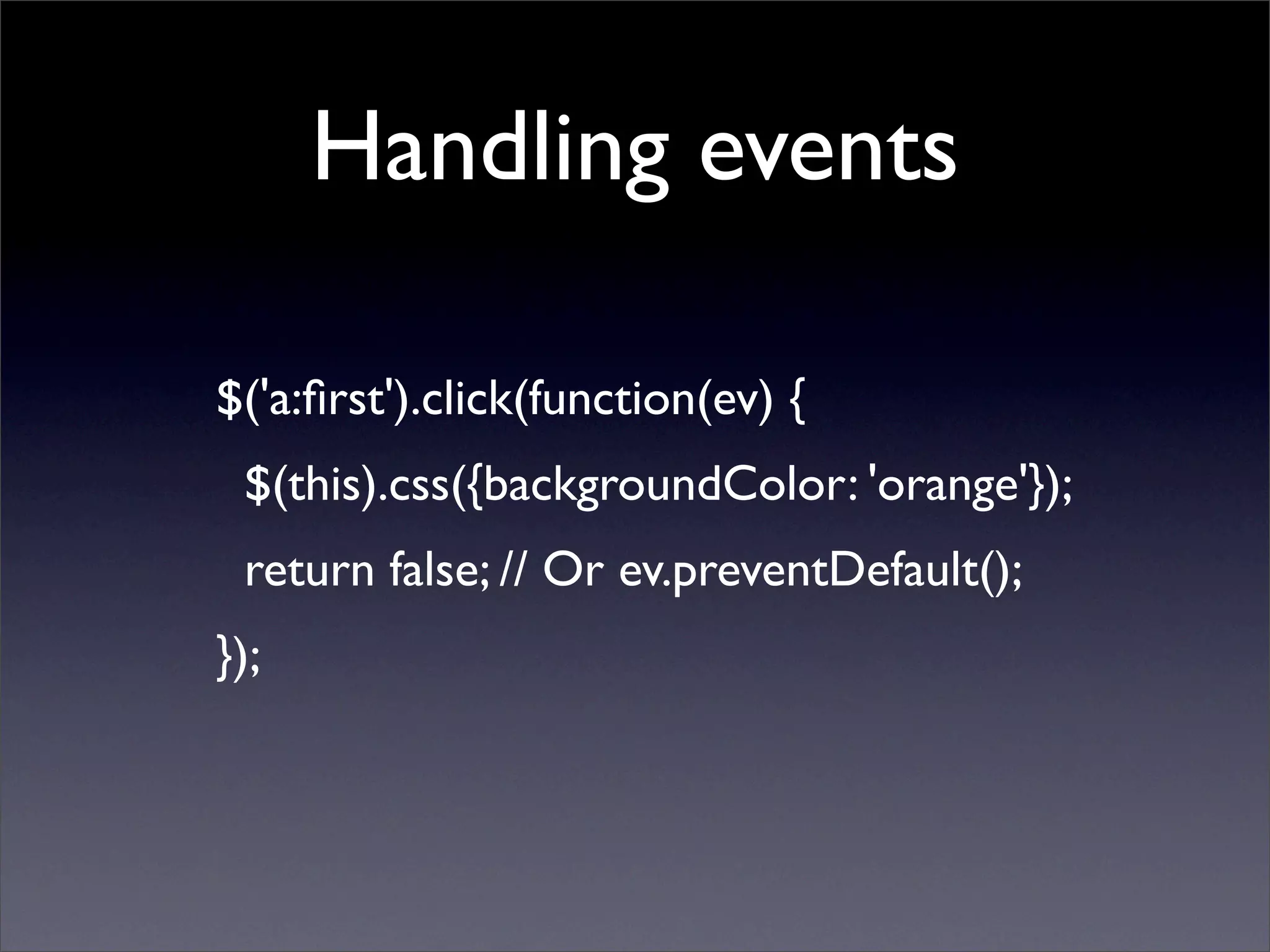
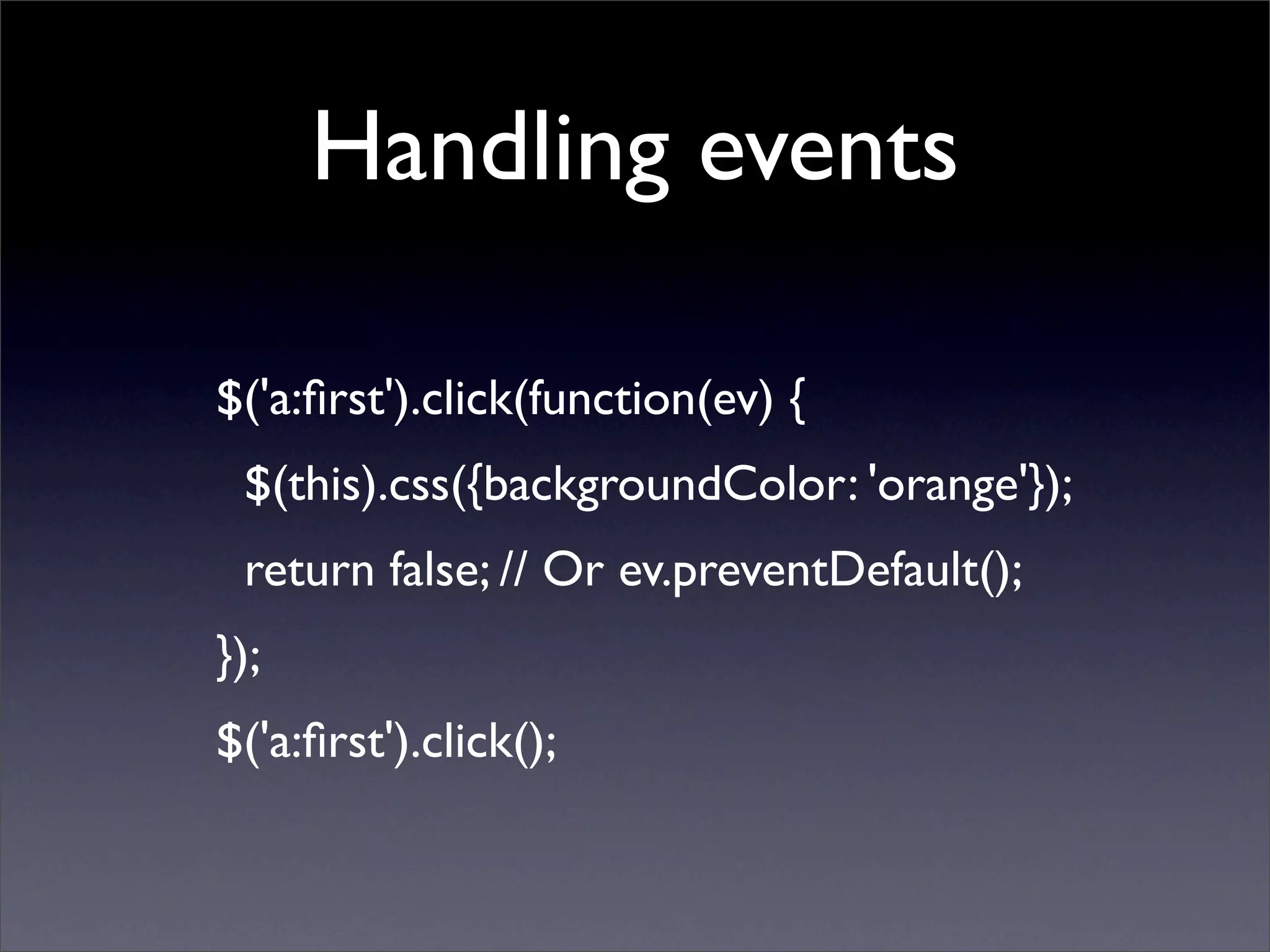
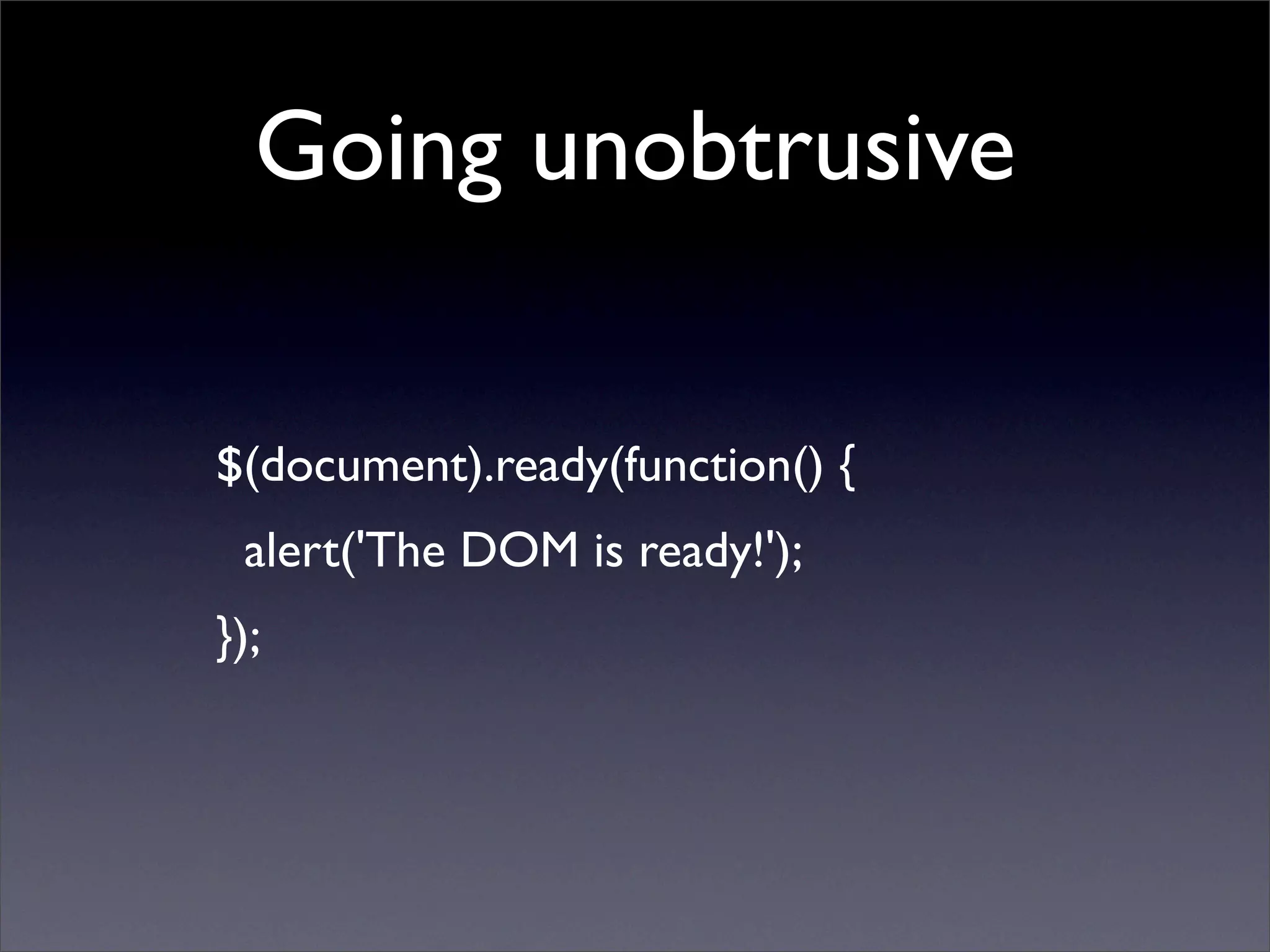
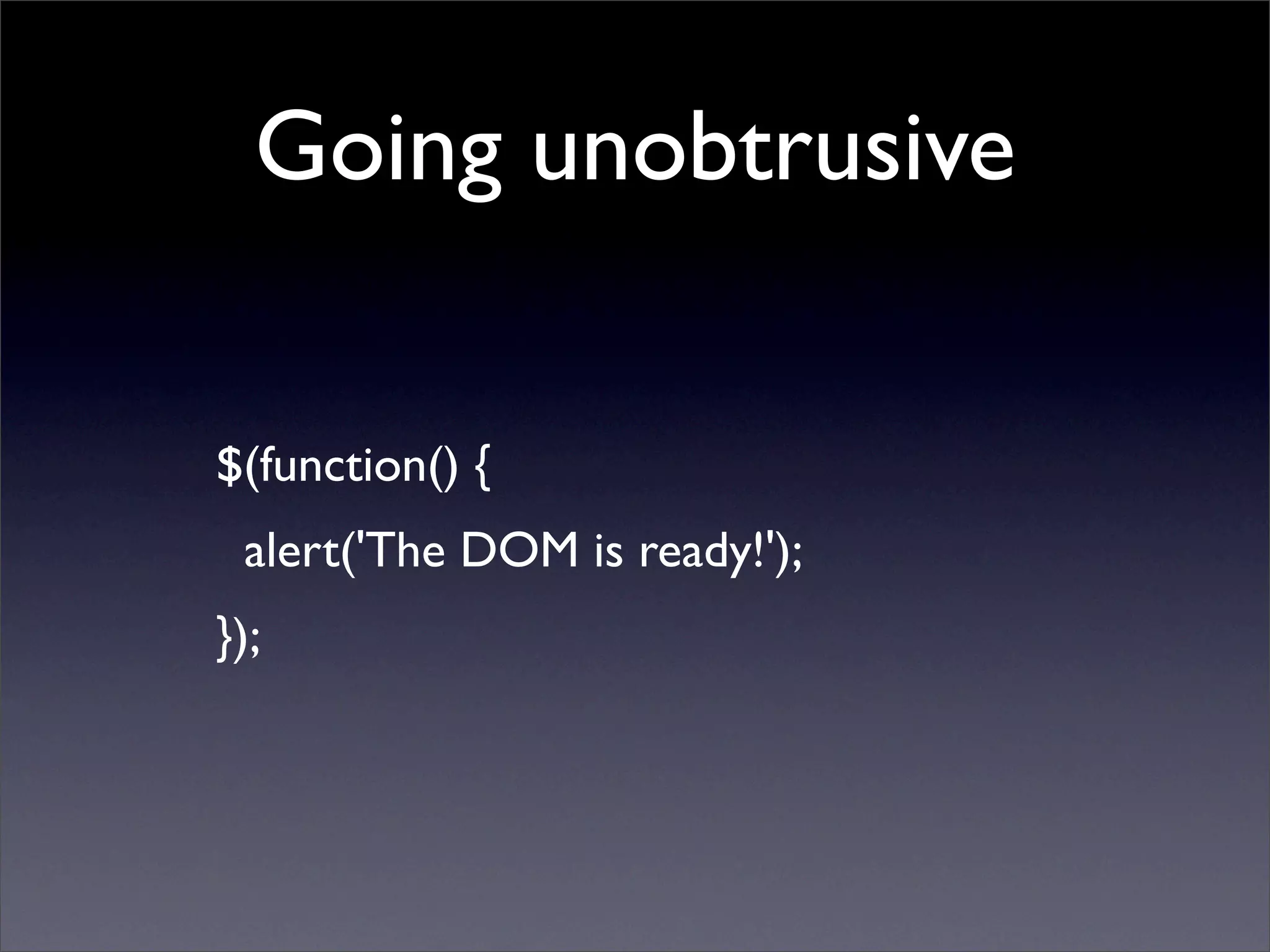
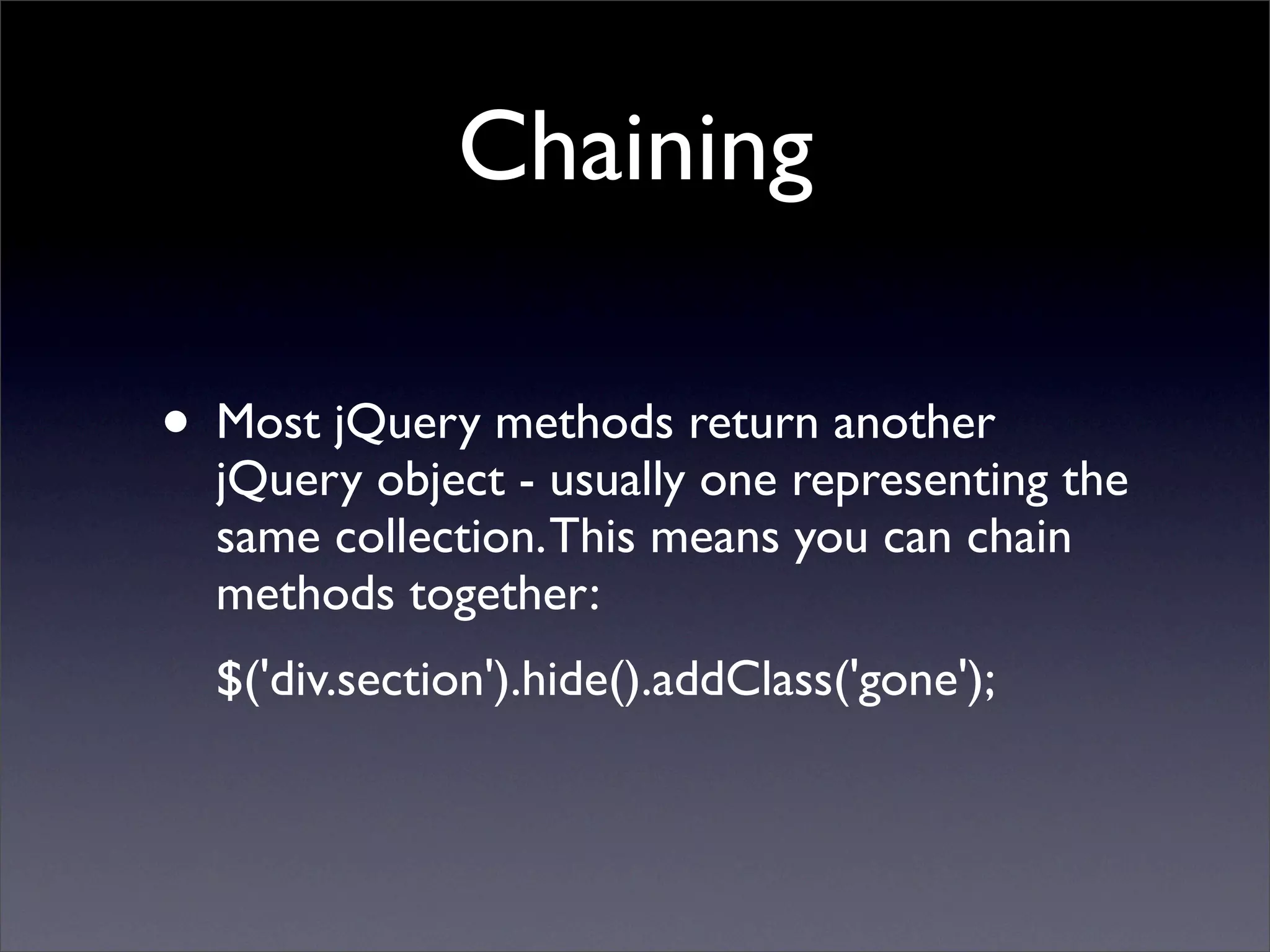
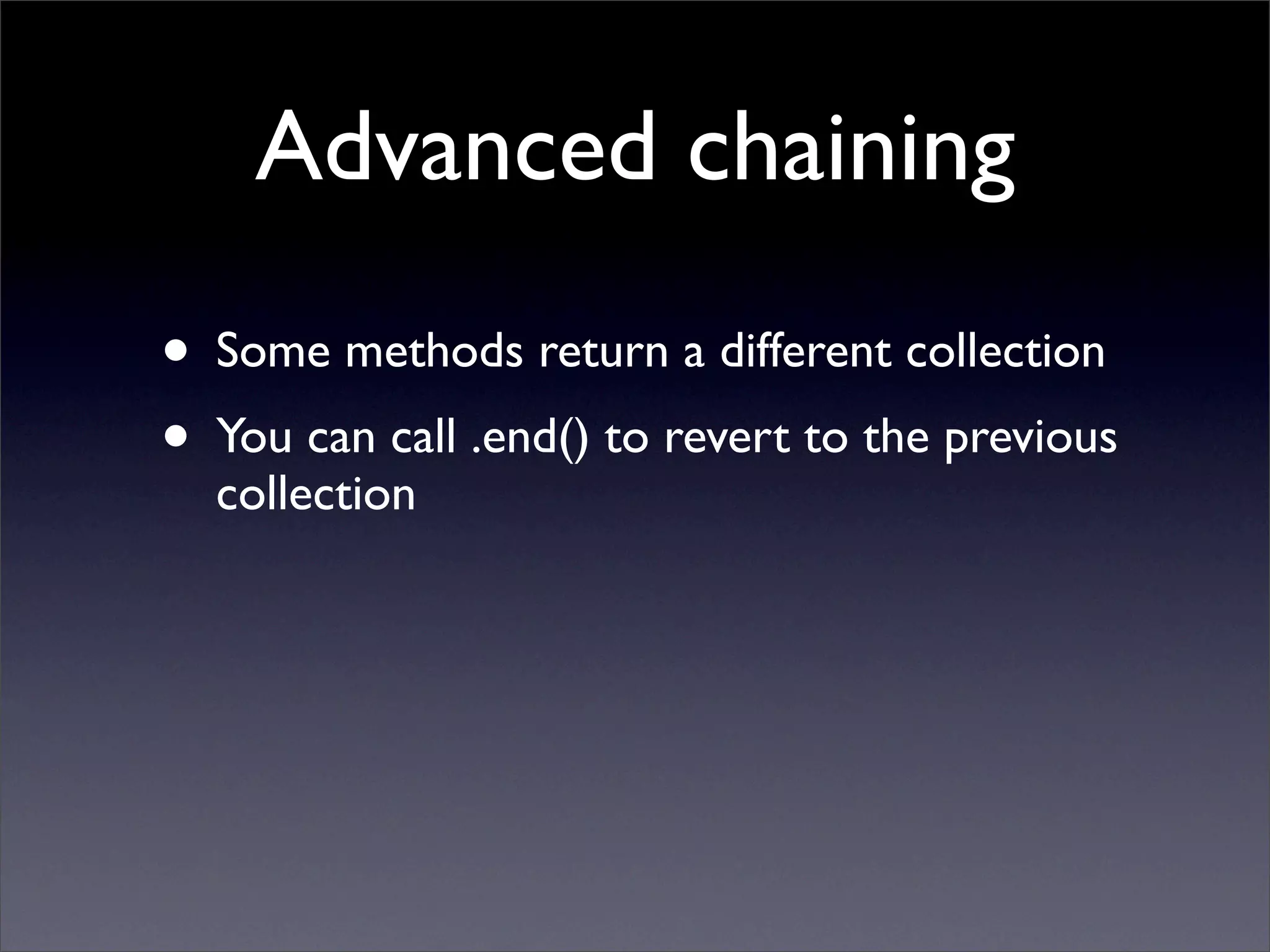
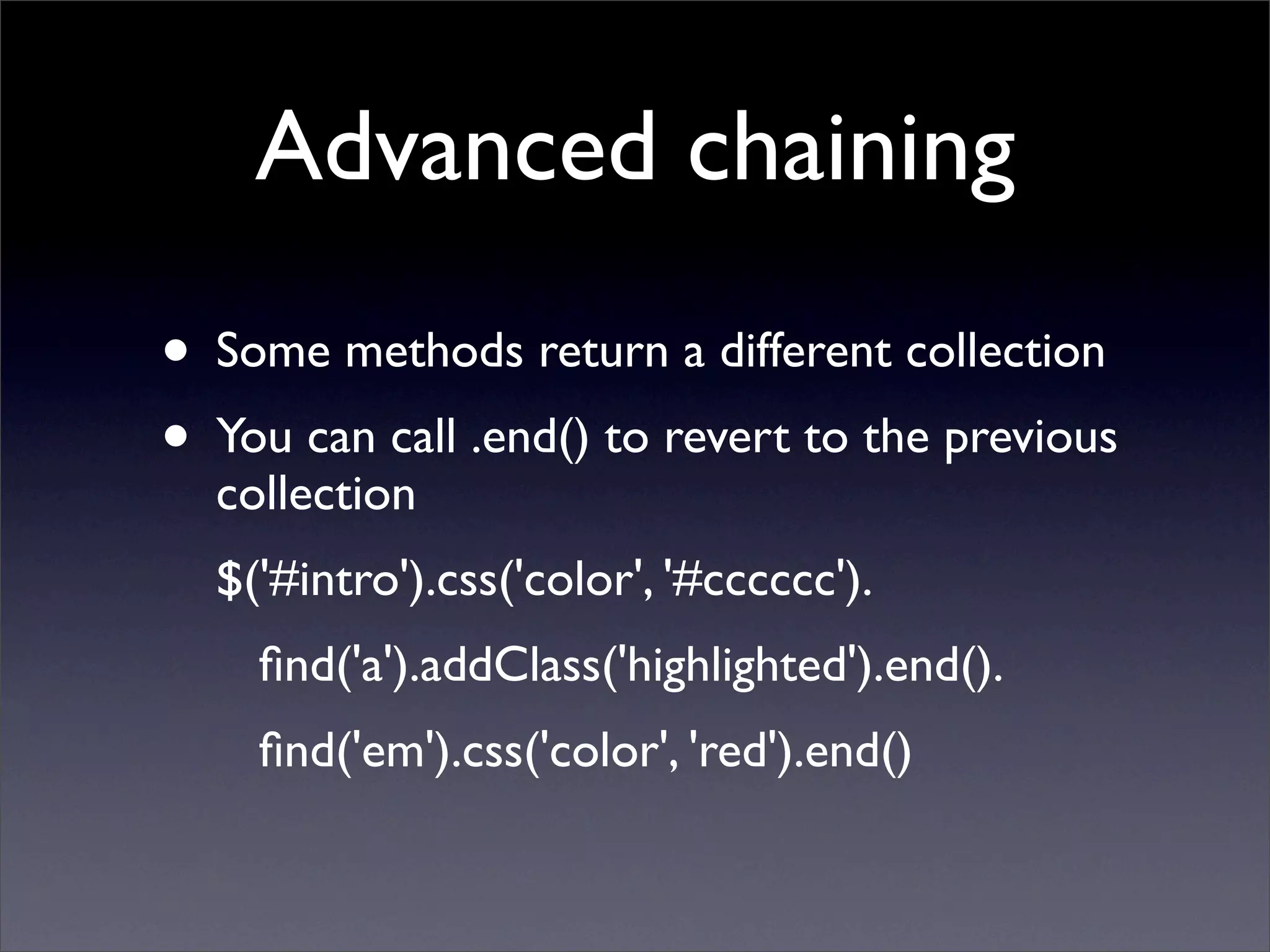
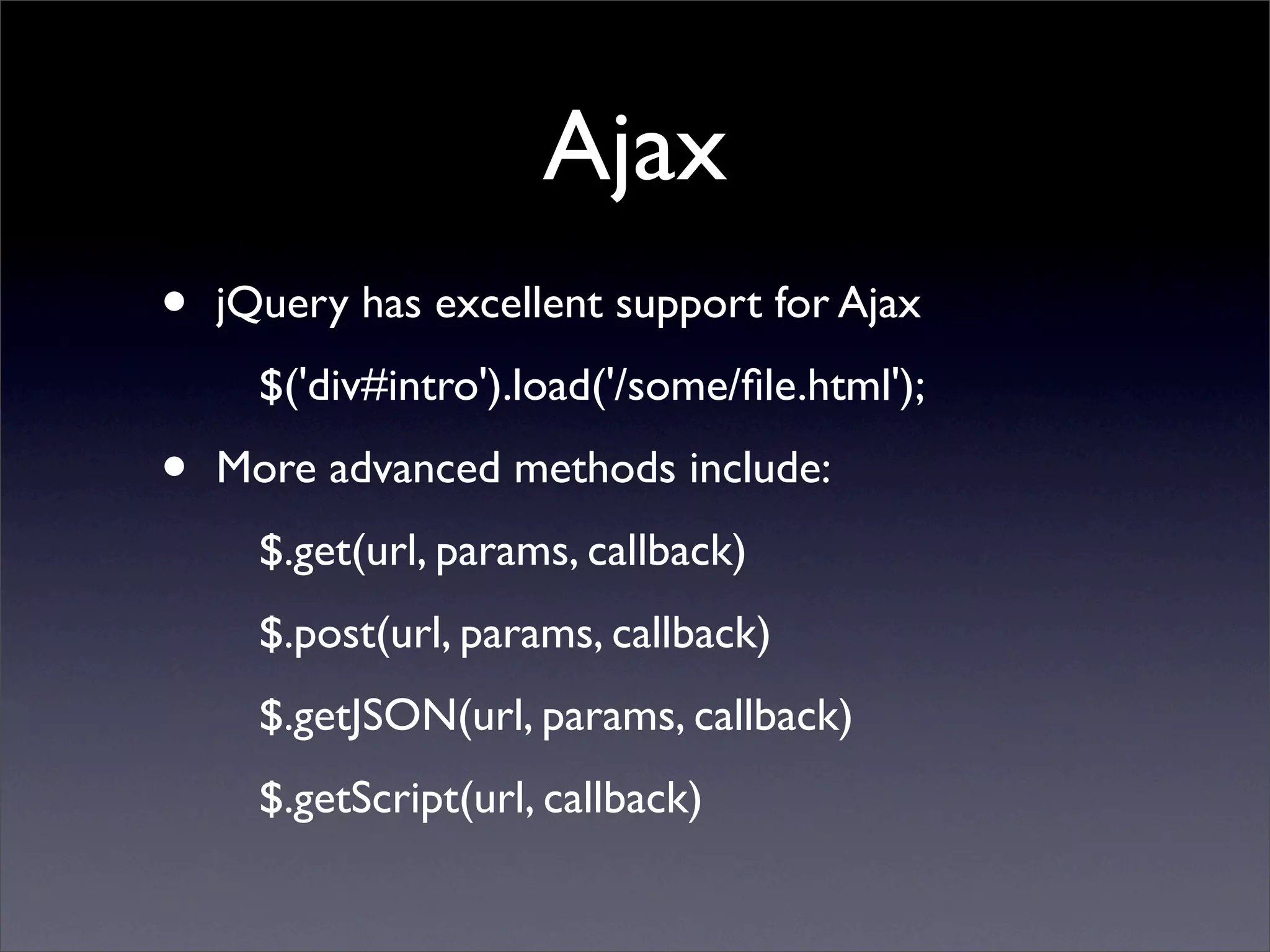
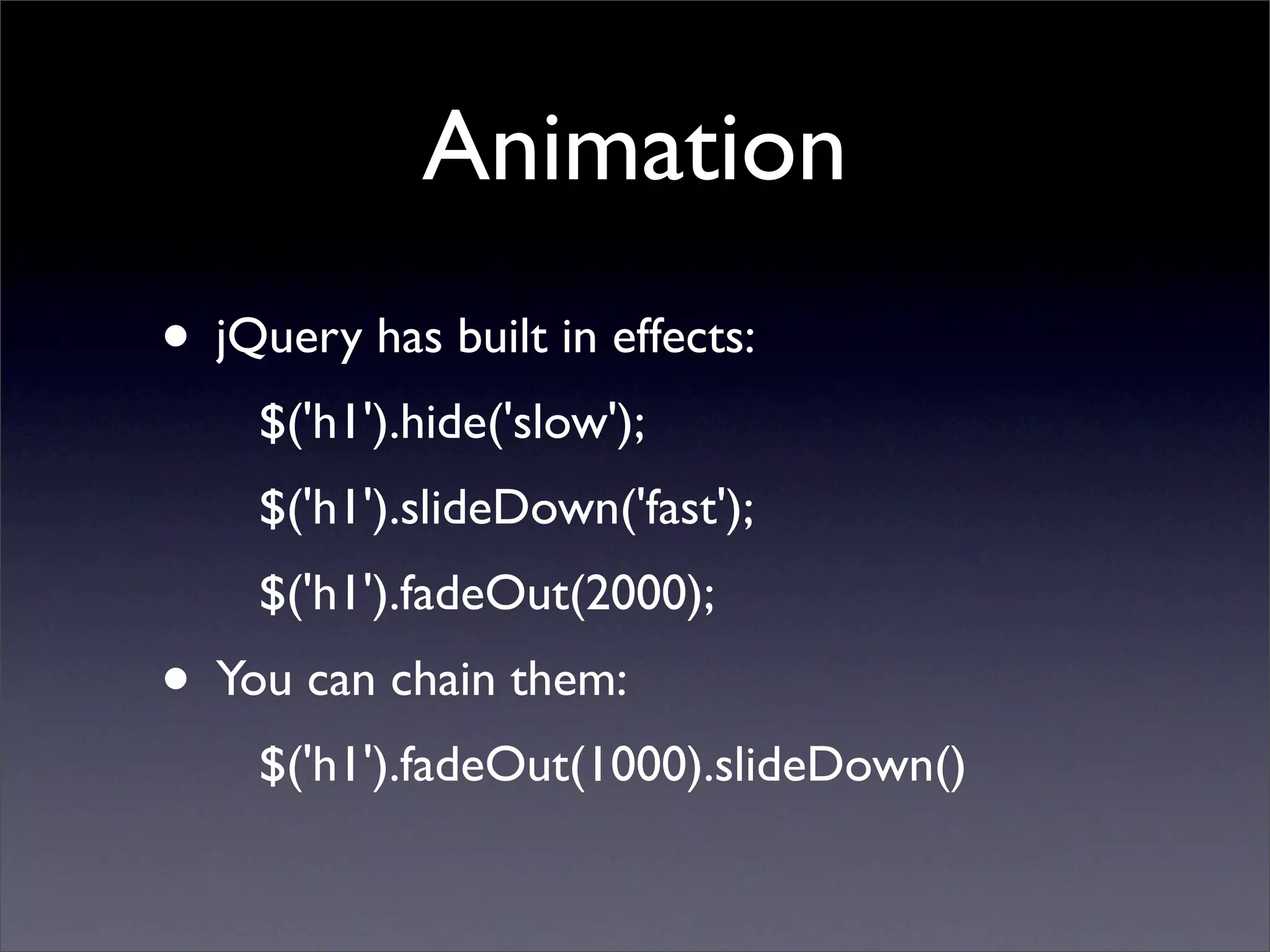
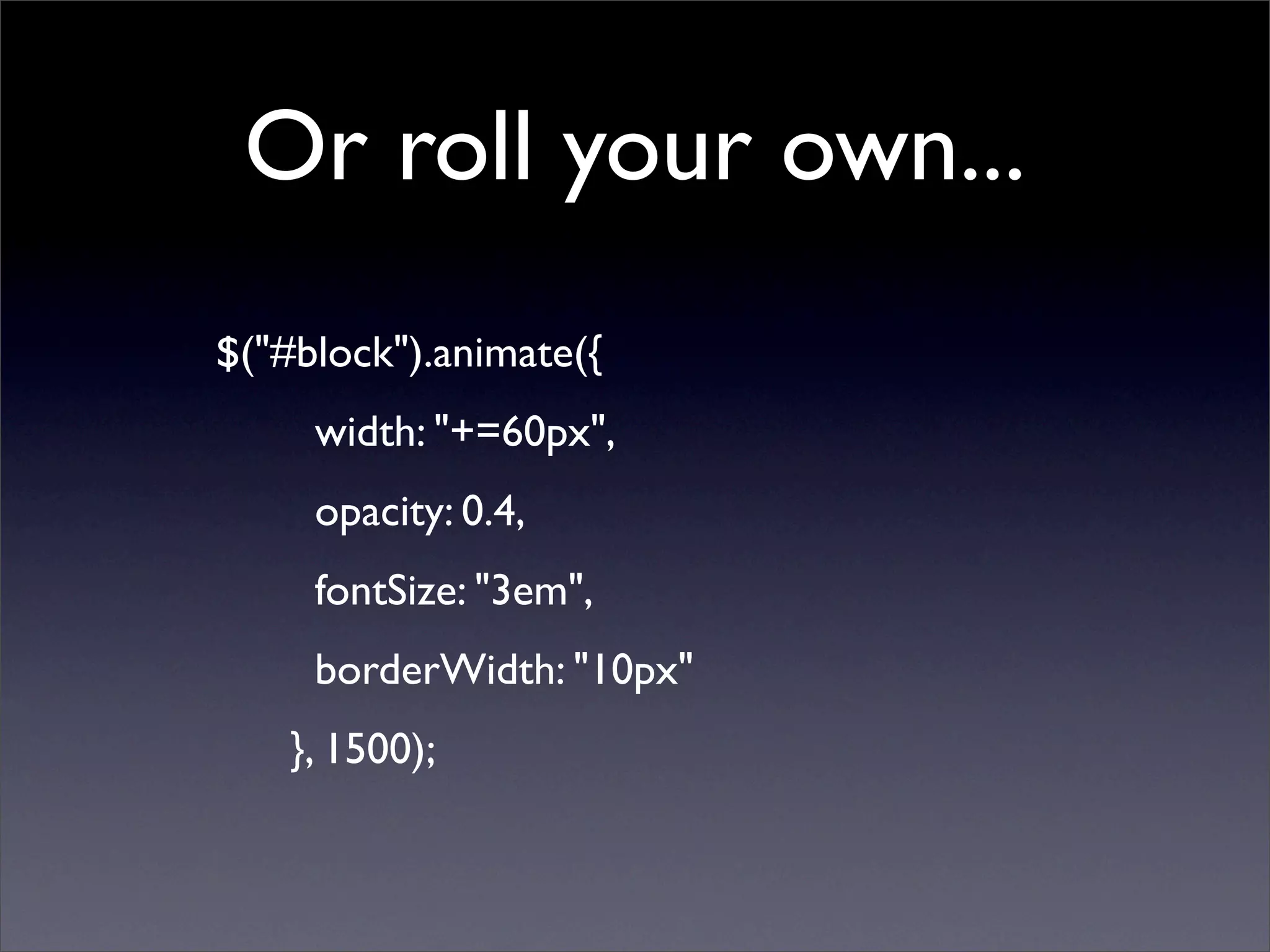
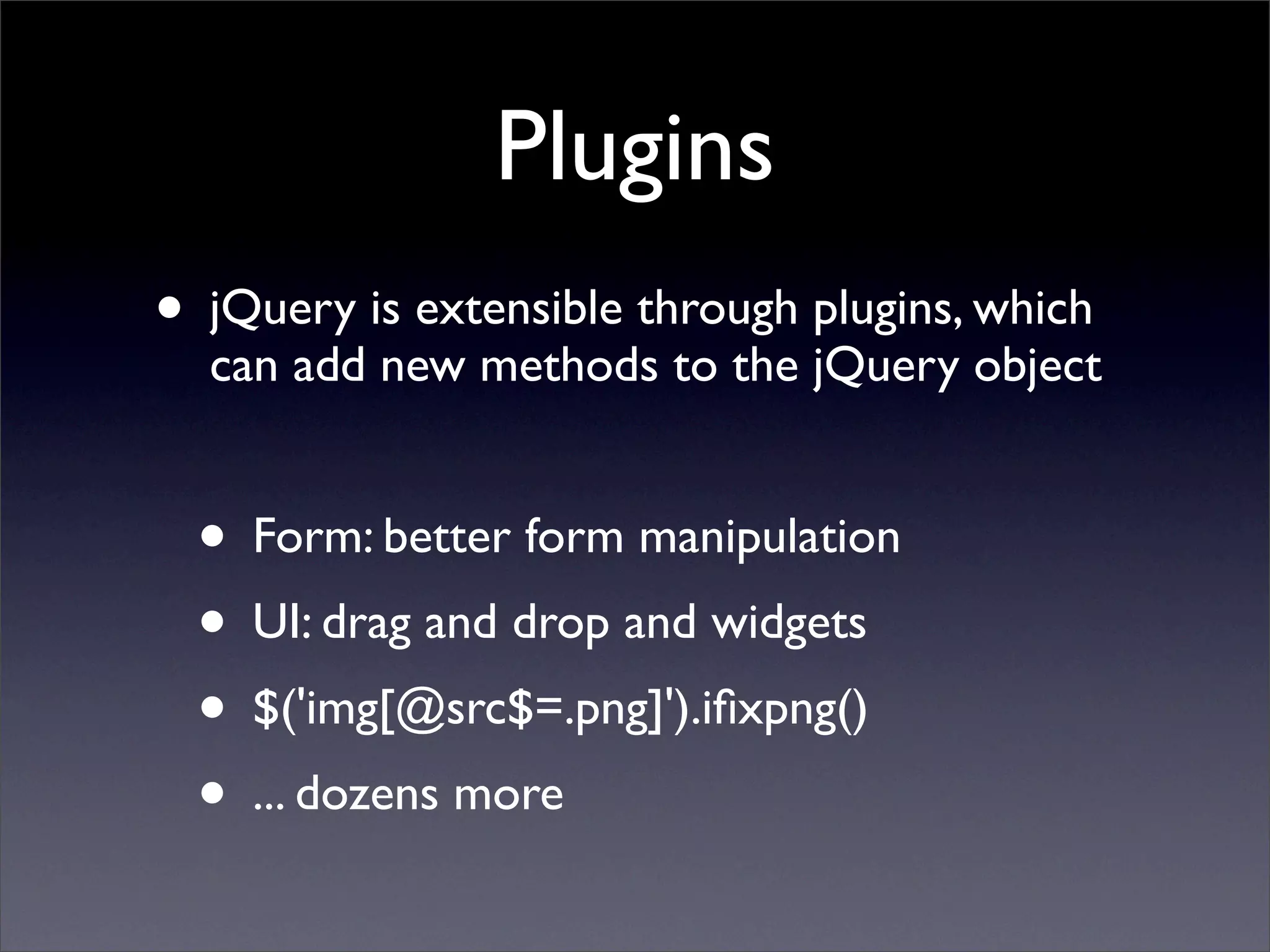
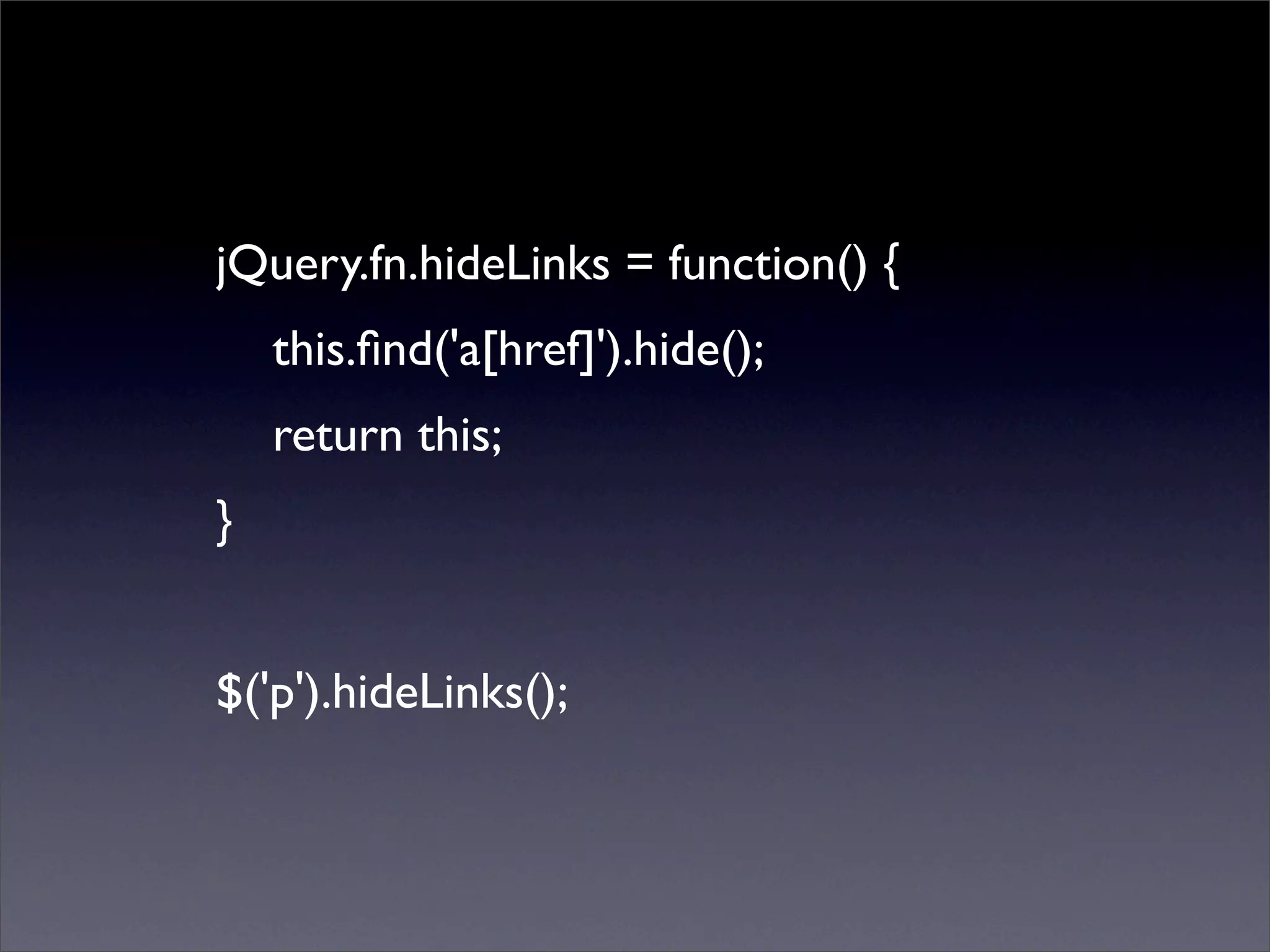
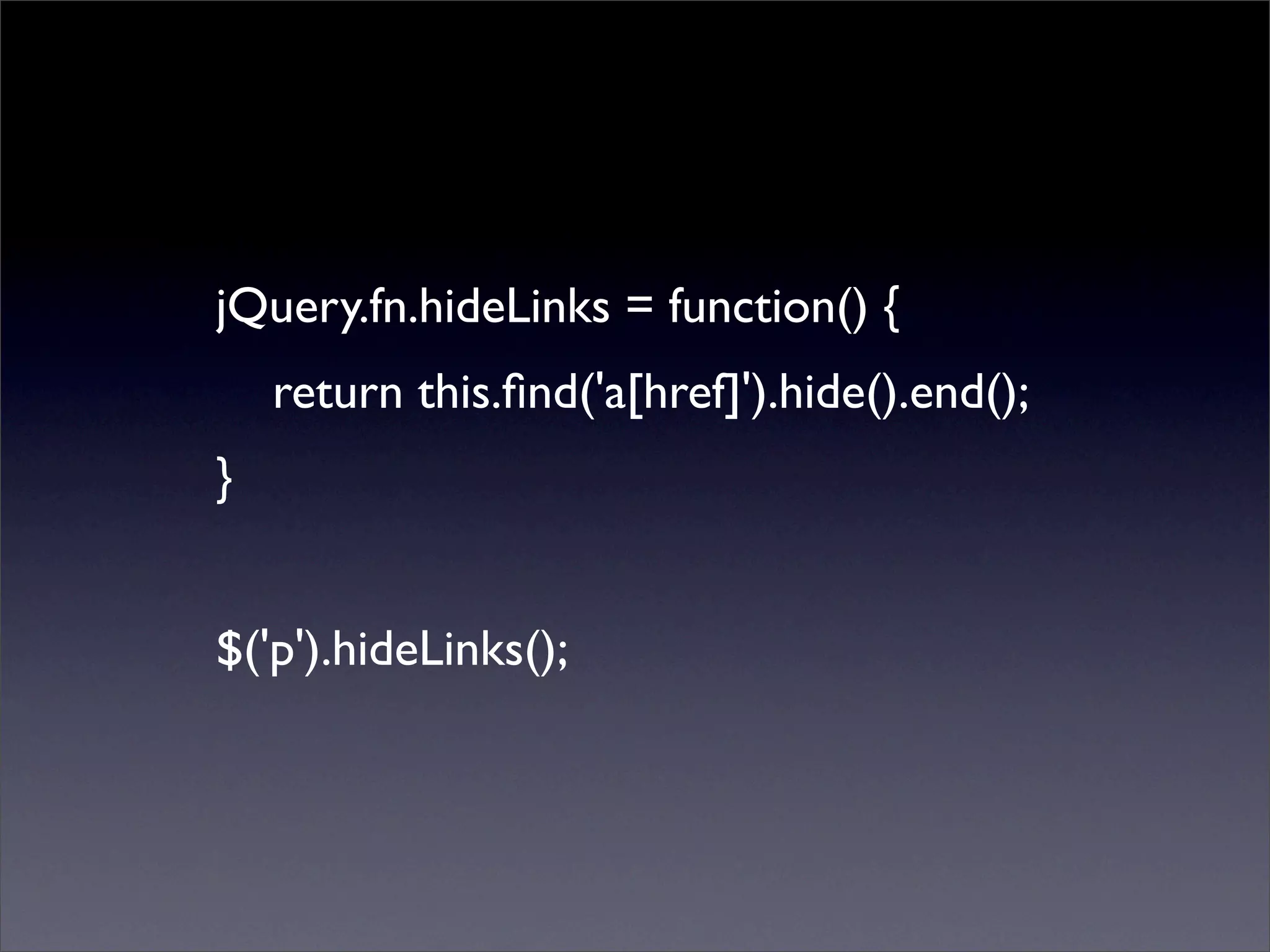
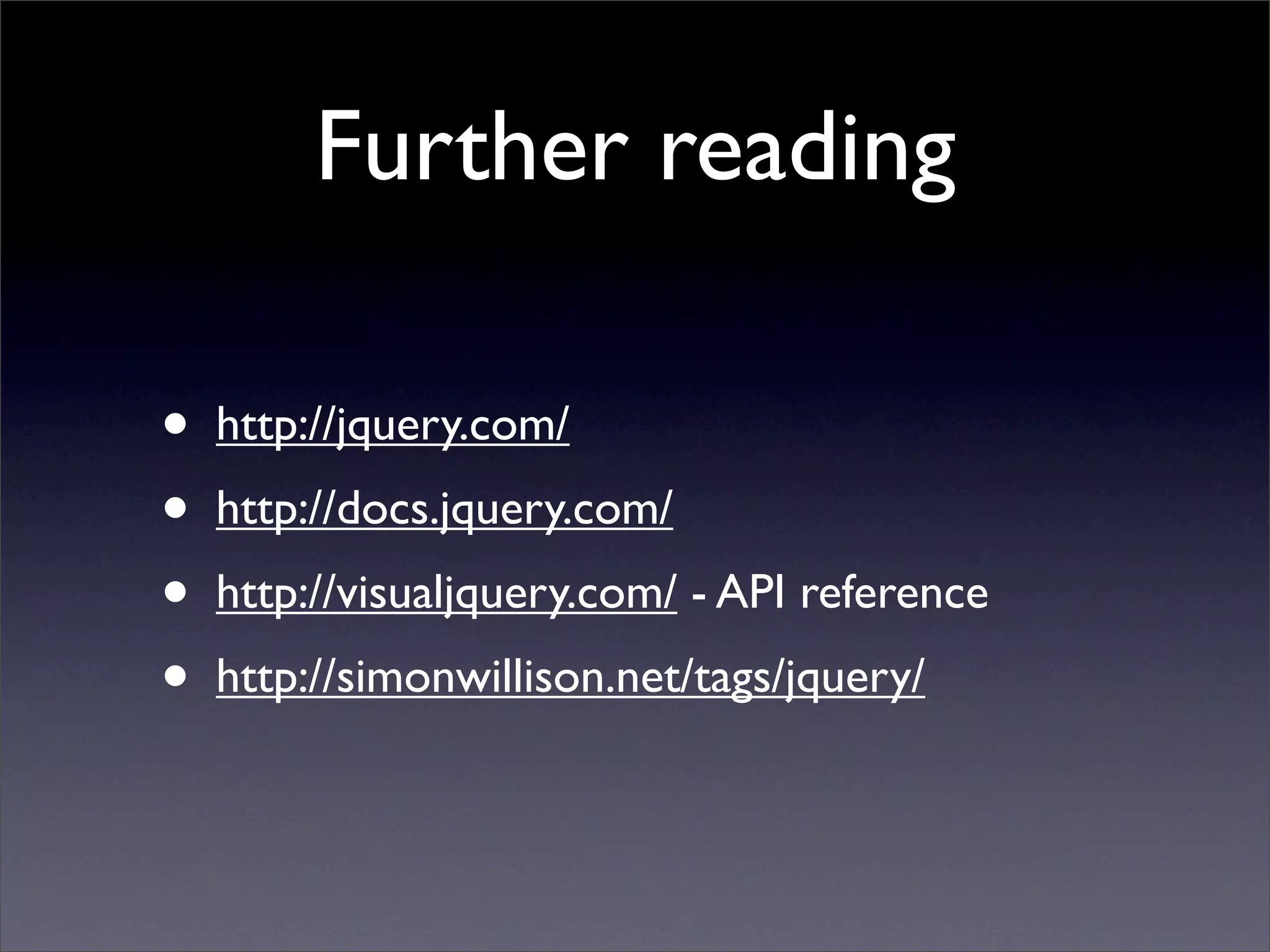

- jQuery is a JavaScript library that simplifies HTML document traversal and manipulation, as well as event handling, animation, and Ajax. - It works by allowing the selection of HTML elements and running functions on those elements via a simple and consistent API. - Common uses of jQuery include modifying HTML content, CSS styling, handling user events, animating elements, and loading data from web servers via Ajax.































Introduction to jQuery, a JavaScript library, highlighting comparisons with other libraries and its succinct nature.
Core philosophy of jQuery: simplifying interactions between JavaScript and HTML through selectors and functions.
Explanation of CSS selectors and advanced selectors supported by jQuery for manipulating DOM elements.
Overview of jQuery collections and methods available for handling matched DOM elements.
Methods to manipulate HTML content, attributes, and CSS styles using jQuery functions.
Event handling mechanism in jQuery allowing dynamic interaction with user actions on the elements.
Illustration of when the DOM is ready for manipulation using jQuery.
How jQuery supports chaining methods to create concise and readable code.
jQuery's excellent support for Ajax functions including load, get, and post methods.
Built-in animation effects in jQuery and how they can be combined with other methods.
Extensibility of jQuery through plugins which enhance its functionality.
Additional resources for learning jQuery, including official documentation and API references.